Your Own Italian Garden Aesthetic – From Grandeur to Modern Serenity
The sun dips low over Florence. Ancient cypress trees stand like dark sentinels against amber sky. You’re in the Boboli Gardens, where every hedge has been clipped for centuries. Every fountain tells a story.
But you don’t need a Renaissance palace to capture that magic.
[toc-ez]
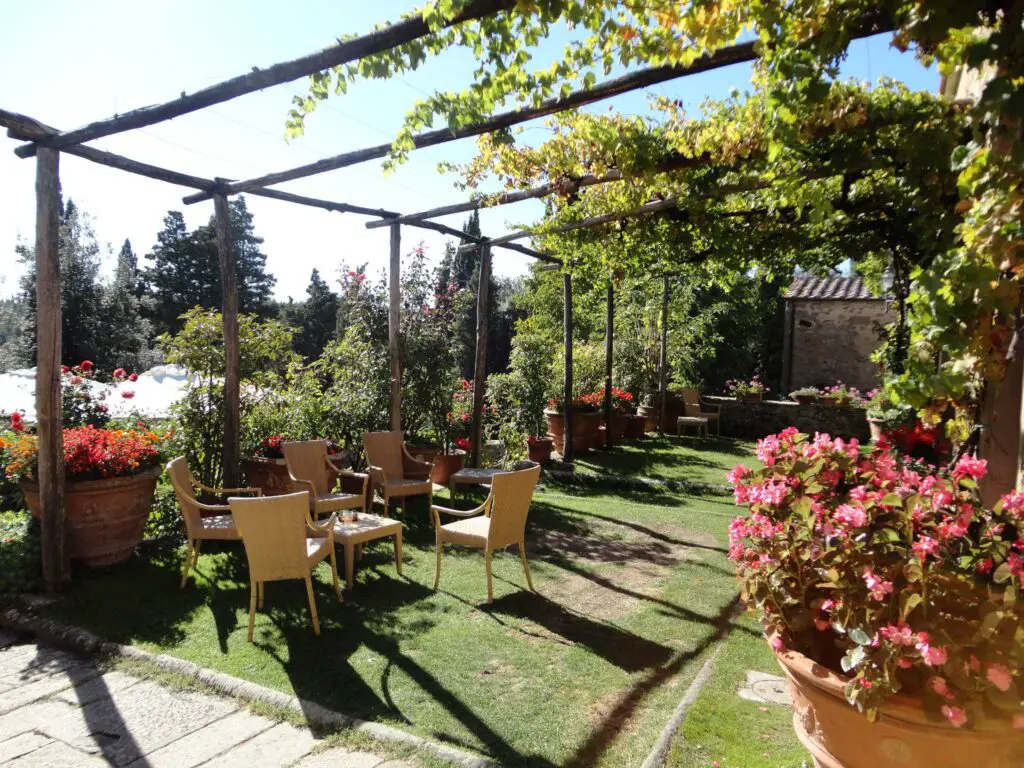
Italian garden design has captivated homeowners for 500 years. And for good reason. These gardens speak a universal language of beauty, order, and outdoor living. They transform ordinary yards into extraordinary spaces.
Today’s homeowners want that same enchantment. They crave the elegance of Italian design. But they need it to fit their lifestyle, their budget, and their maintenance schedule. Modern Italian gardens answer that call. They blend timeless principles with contemporary practicality.
You can create your own Italian paradise. Whether you have acres or a tiny courtyard. Whether you’re a master gardener or can barely keep a cactus alive. The secret lies in understanding what makes these gardens truly Italian.
The Soul of Italian Garden Design: Understanding the Core Philosophy
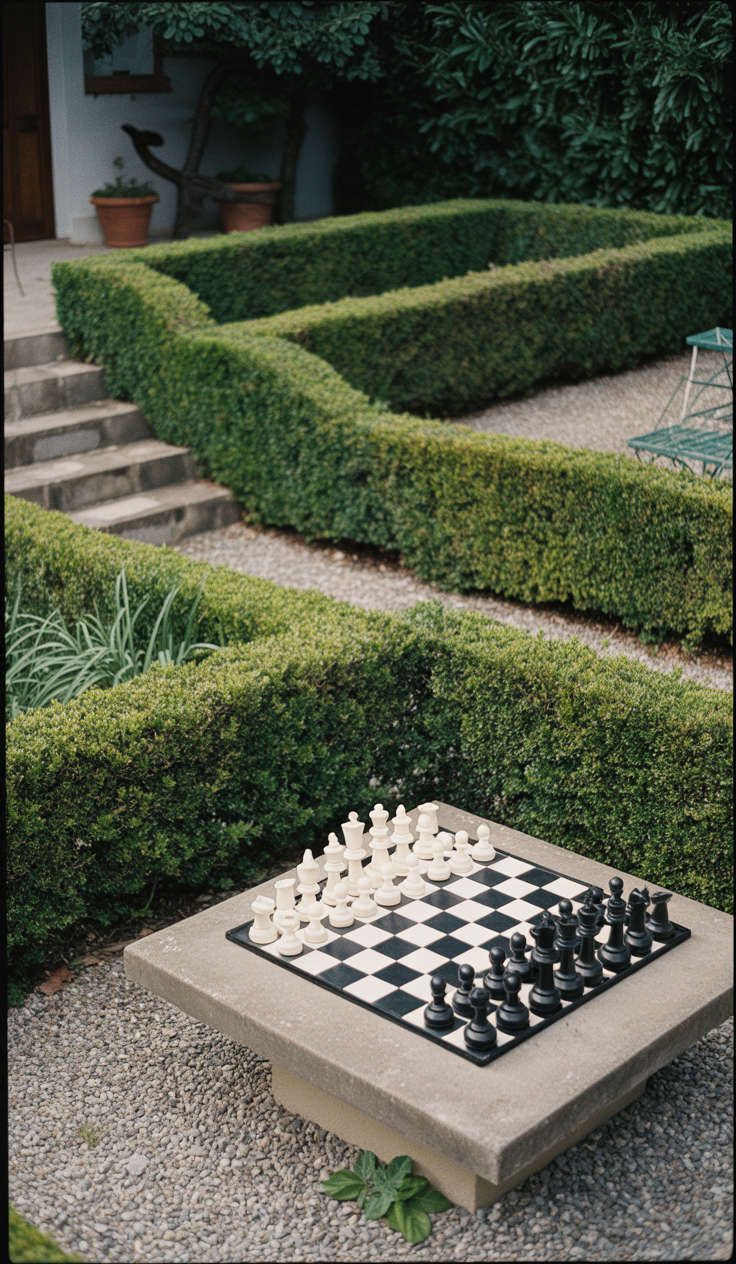
Traditional Ethos: Man’s Triumph Over Nature
Renaissance Italians didn’t just plant gardens. They created outdoor architecture. Every tree had its place. Every flower bed followed mathematical rules. Nature bent to human will.
Italian garden design traditionally meant control. Straight lines dominated. Symmetry ruled supreme. Gardens became extensions of the villa itself. Stone terraces conquered hillsides. Water defied gravity in elaborate fountains.
Italians saw their gardens as stages. Places to display wealth, taste, and intellect. A properly designed garden proved you could master the natural world. It showed your sophistication.
Modern Evolution: Creating Harmony
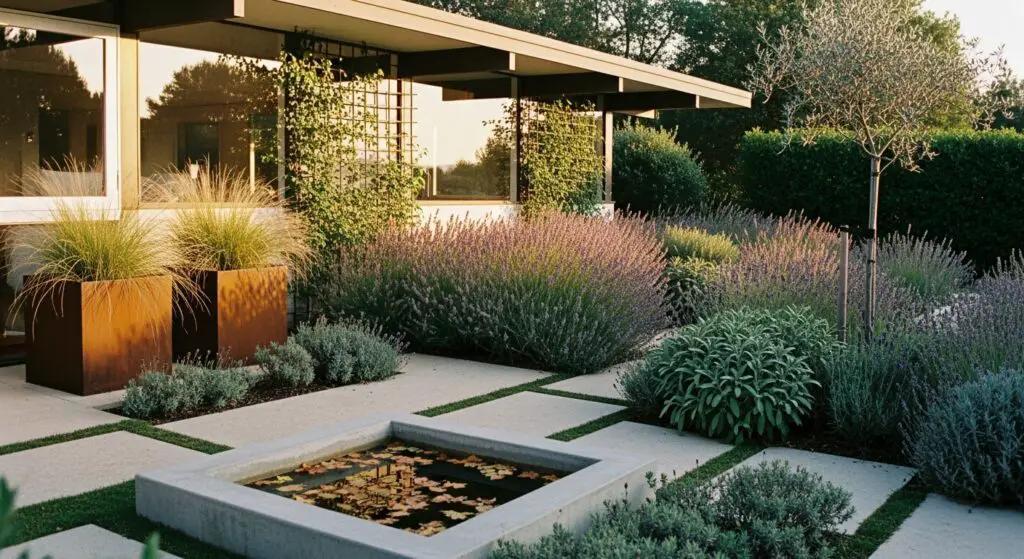
But times change. Today’s Italian garden landscaping takes a gentler approach. Modern designers work with nature, not against it. They follow land contours. They let plants express natural forms.
Contemporary Italian gardens still honor structure. But they soften rigid geometry. Concrete replaces carved marble. Ornamental grasses sway where topiary once stood. The goal shifts from domination to dialogue.
Living La Bella Figura
“Bella figura” means making a good impression. Looking your best. Italian gardens embody this concept perfectly. Traditional or modern, they’re about creating beauty. About living well.
Your garden becomes an outdoor room. A place for morning espresso. Evening aperitivos with friends. Sunday family dinners under the stars. Italians don’t just look at their gardens. They live in them.
The philosophy remains constant. Create a beautiful space. Make it functional. Let it enhance your daily life. Whether you choose classical formality or modern simplicity, you’re creating your own bella figura.
Classic Italian Garden Elements: The Traditional Vocabulary
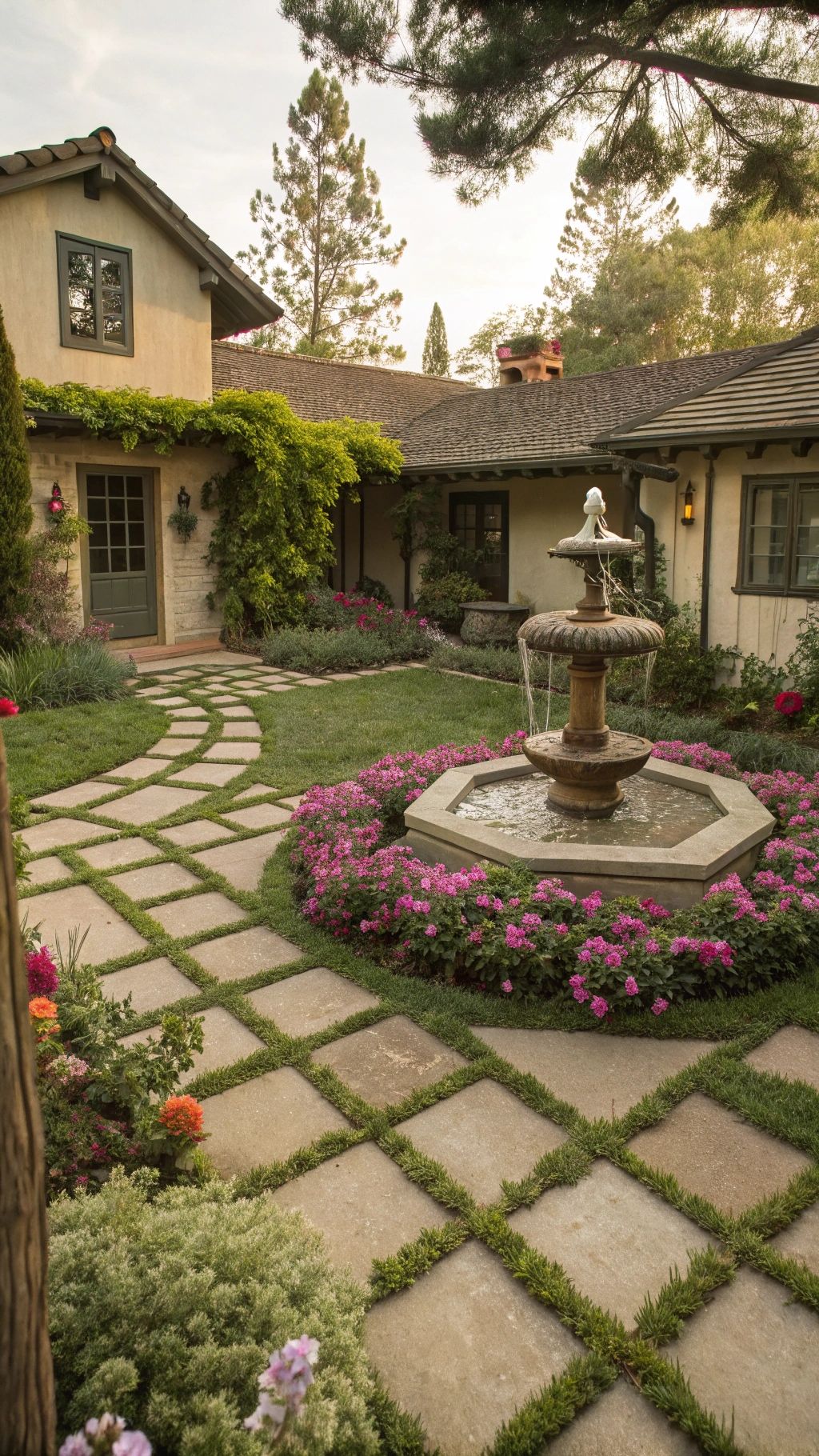
Symmetry and Geometry: Mathematical Precision
Walk into any traditional Italian garden and geometry hits you first. Perfect squares. Precise circles. Mirror-image plantings on either side of a central path. Nothing happens by accident.
Renaissance designers used mathematical ratios. The golden rectangle appeared everywhere. Garden rooms related to each other through careful proportion. Even plant heights followed strict rules.
You can use these principles today. Mark out geometric beds with string and stakes. Plant matching shrubs at corners. Create balance without perfection. A little asymmetry won’t ruin the effect.
Water as Theater
Water defines Italian garden features. Not quiet ponds or gentle streams. We’re talking drama. Fountains shooting skyward. Cascades tumbling down terraces. Water making noise, catching light, demanding attention.
Traditional gardens used gravity-fed systems. Water traveled from high reservoirs through elaborate channels. It powered trick fountains that soaked unsuspecting guests. Every drop served the spectacle.
Your fountain doesn’t need such complexity. But it should make a statement. Choose designs with multiple tiers. Let water fall from height. Add underwater lights for evening drama. Make water your garden’s star performer.
Stone and Statuary
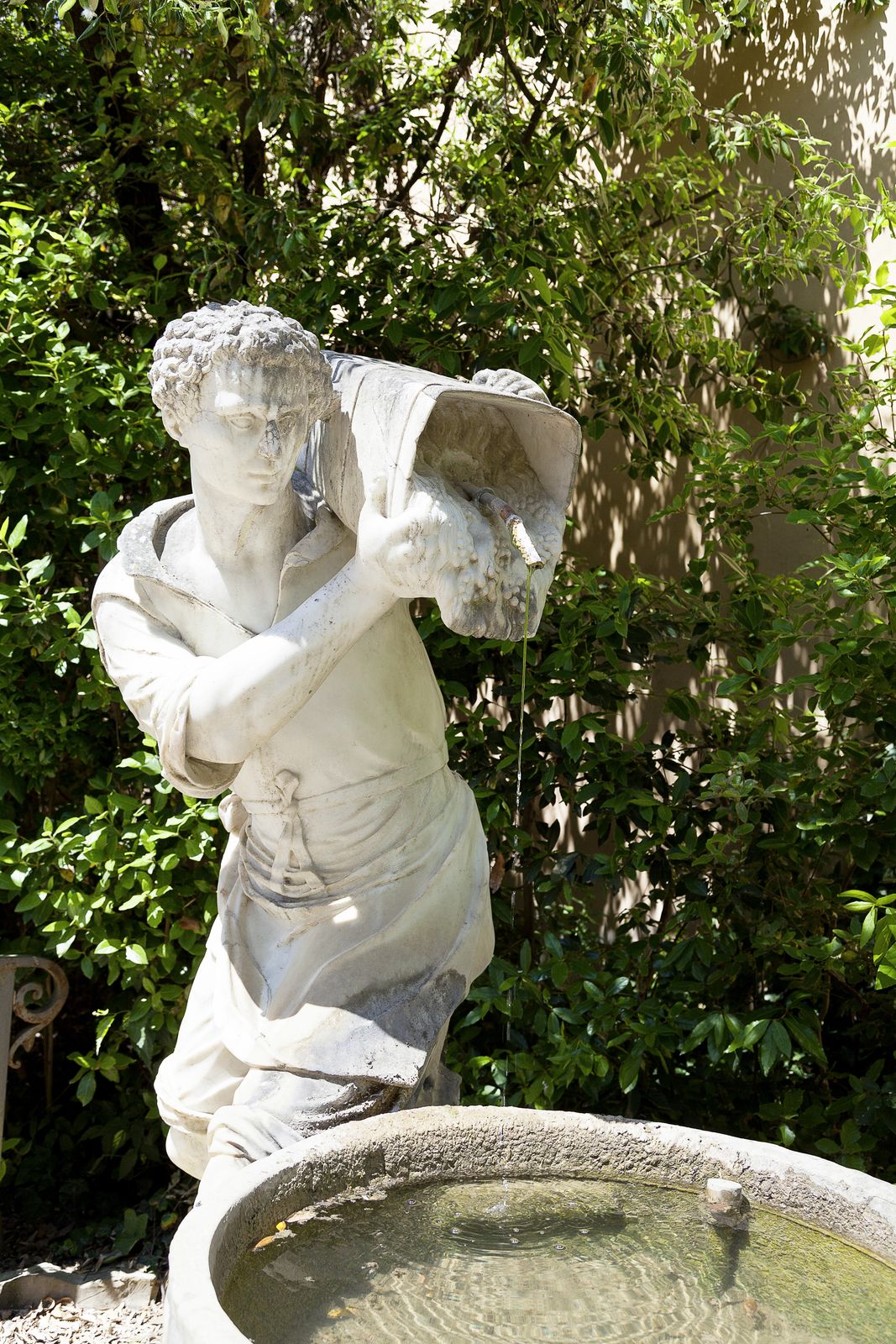
Italians built gardens to last forever. Marble statues watched over parterres. Stone balustrades lined terraces. Carved urns marked pathway intersections. These elements provided permanent structure.
Italian garden decor meant classical themes. Roman gods. Mythological creatures. Cherubs and dolphins. Every piece told a story or conveyed meaning. Gardens became outdoor galleries.
Modern interpretations keep the stone but simplify forms. Concrete planters replace carved urns. Abstract sculptures substitute for classical statuary. The materials still speak of permanence and craft.
Architectural Planting
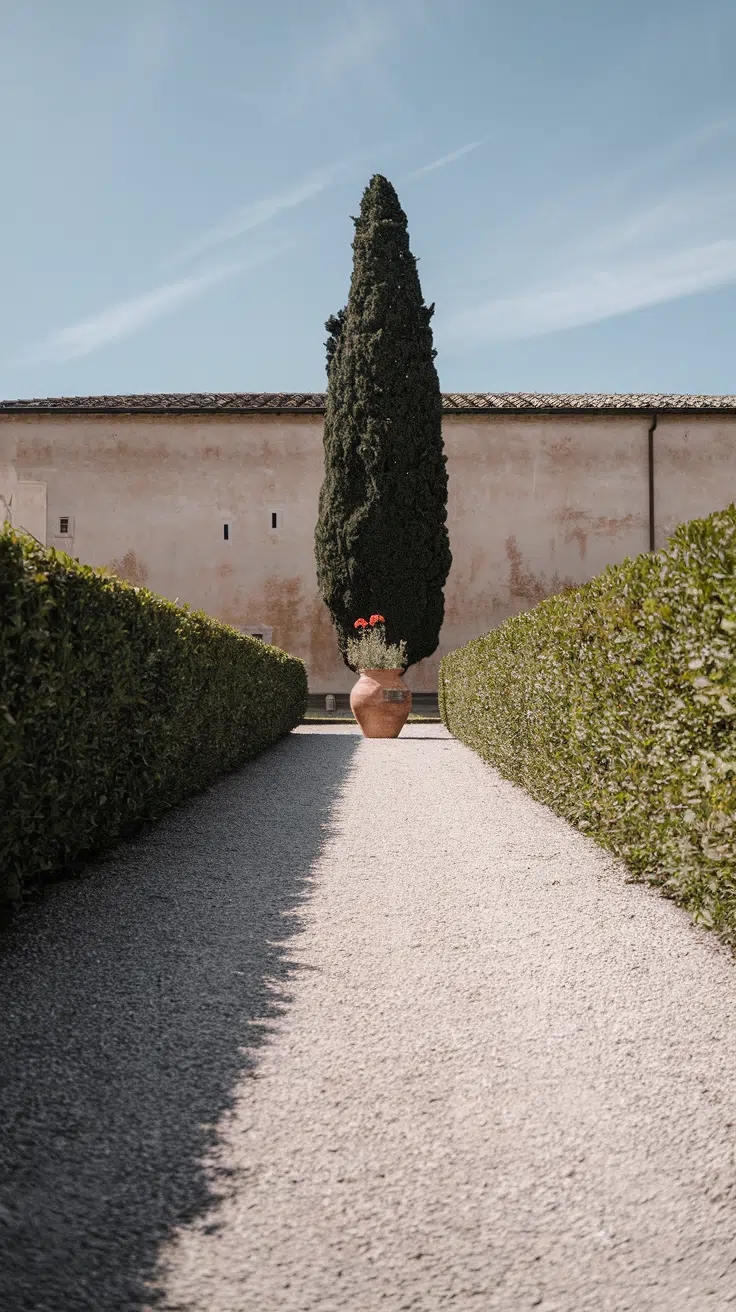
Plants in traditional Italian gardens behaved like building materials. Boxwood hedges formed green walls. Cypress trees created vertical accents. Topiary balls and cones added geometric interest.
This architectural approach to planting defines Italian garden landscape. Plants provide structure first, flowers second. Evergreens dominate because they maintain their shape year-round. Color comes from terracotta pots, not flower beds.
Maintenance was intensive. Hedges needed monthly trimming. Topiary required constant attention. But the effect was stunning. Living architecture that changed with seasons while maintaining its form.
The Compartmentalized Garden
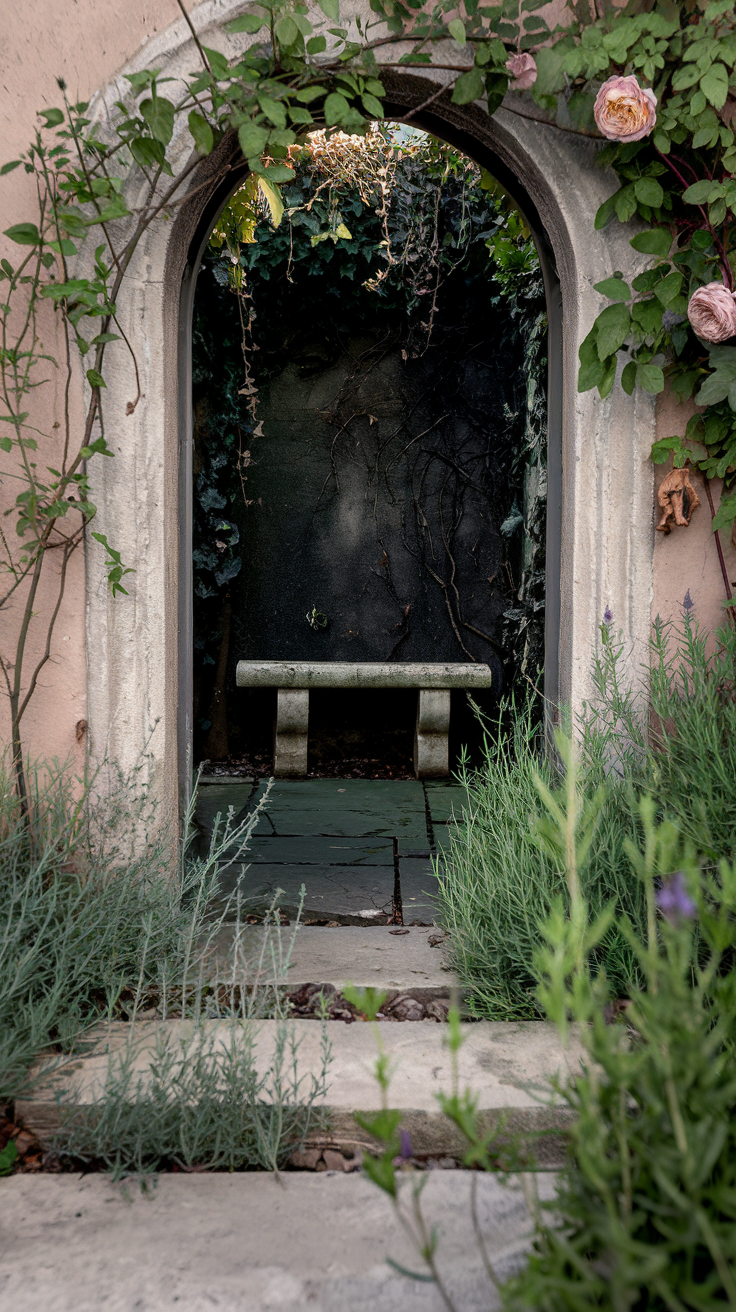
Italian designers divided gardens into distinct rooms. Each space had its purpose. The herb garden. The secret garden. The grand parterre for entertaining. Walls, hedges, or level changes created separation.
These compartments let you experience different moods. Formal spaces for showing off. Intimate corners for quiet reflection. Productive areas for growing food. Each room told part of the garden’s story.
Small gardens benefit from this approach too. Create mini-rooms with different functions. A dining area. A reading nook. A cutting garden. Use vertical elements to suggest enclosure without blocking views.
The Modern Italian Garden: Contemporary Interpretations
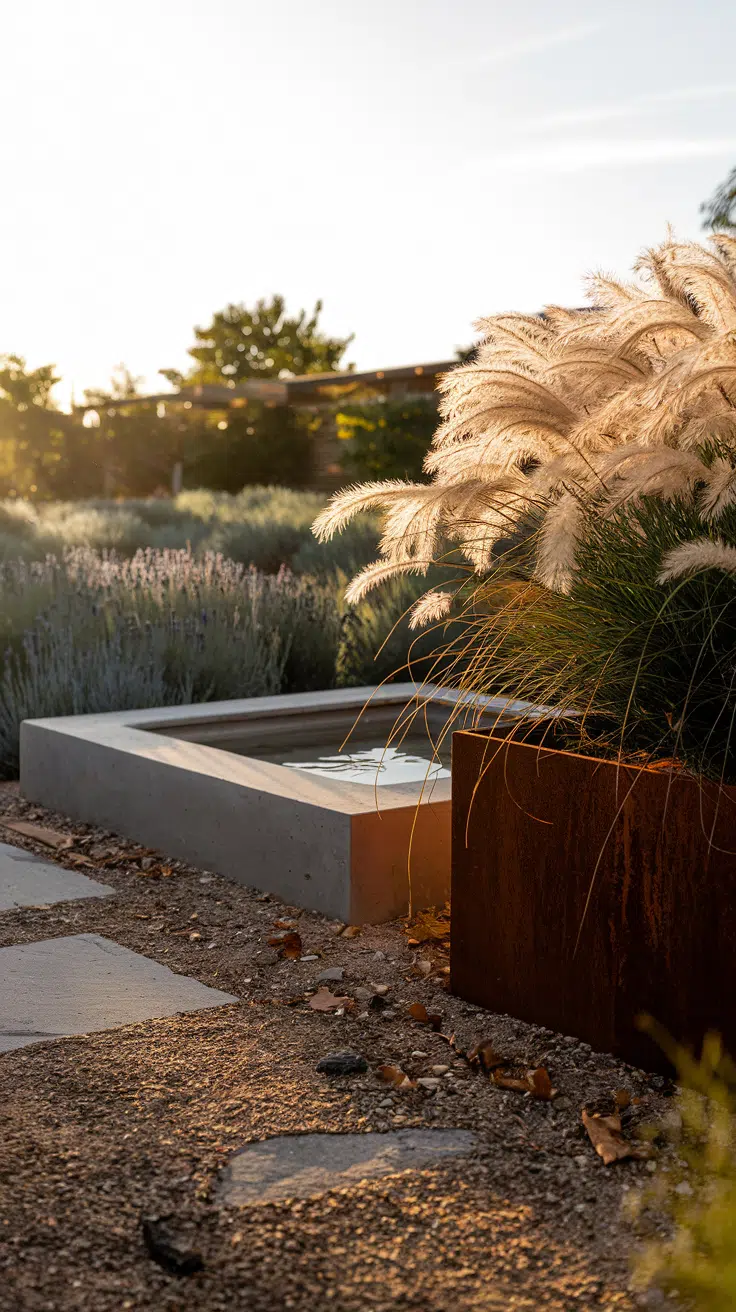
Think mid-century modern home with naturalistic Italian garden. Corten steel planters with ornamental grasses slightly brown at tips. Then imagine a shallow concrete water basin with fallen leaves floating. Plantings of lavender and sage, some woody at the base. All this and you begin to see how to can transition a claaical Italian feel to a modern/contemporary garden.
Flowing with Nature
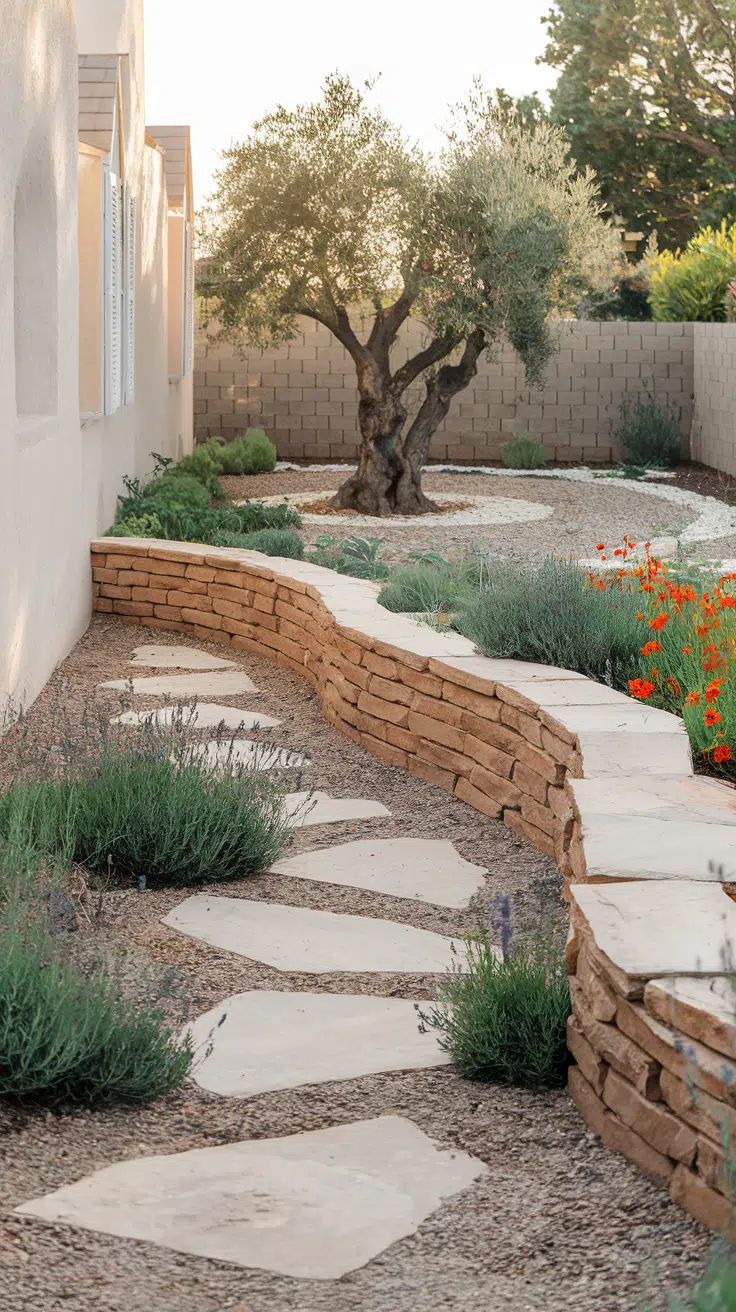
Modern Italian garden modern design reads the land differently. Designers study natural drainage patterns. They work with existing slopes. They preserve mature trees.
Gone are the rigid terraces. Instead, gentle grade changes guide movement. Retaining walls curve rather than march straight. Plants spill over edges. The garden feels inevitable, not imposed.
Materials reflect this softer approach. Rough stone replaces polished marble. Wood adds warmth. Gravel paths meander. Everything suggests human touch without heavy hands.
Minimalist Materials
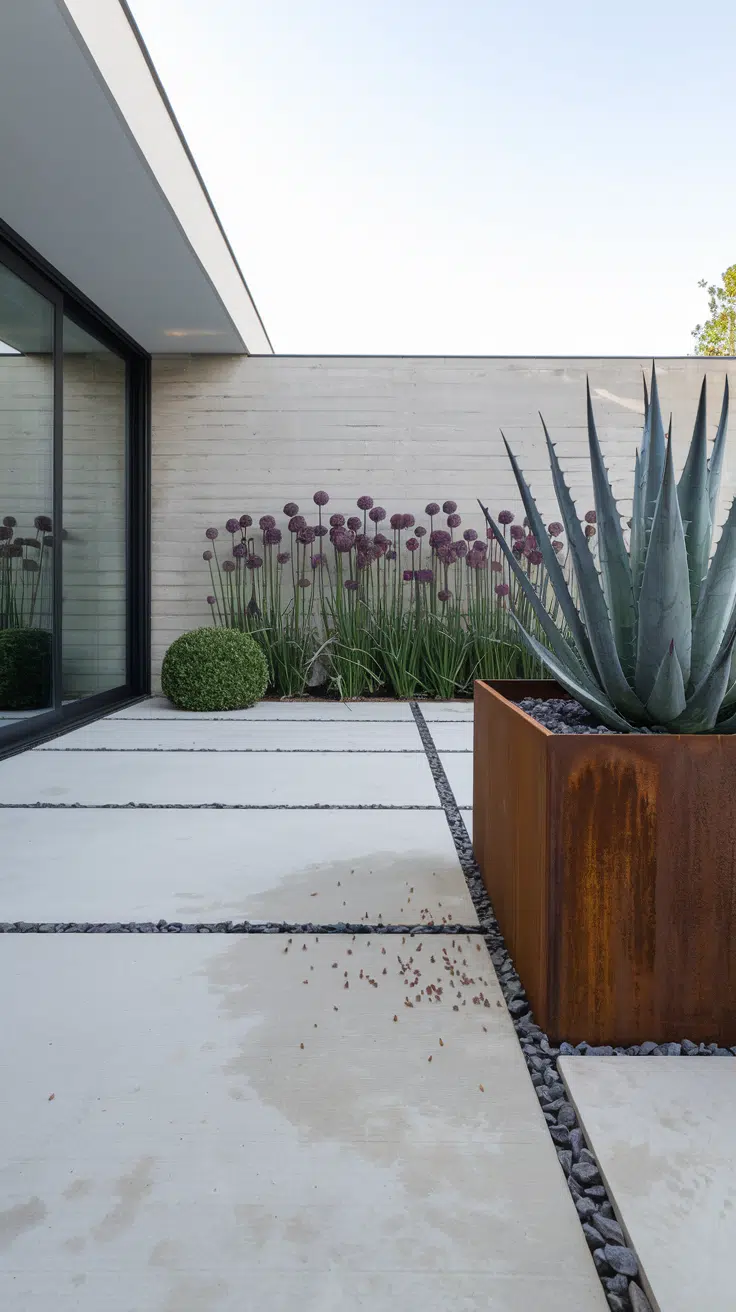
Contemporary Italian gardens speak a new material language. Concrete becomes sculpture. Corten steel adds industrial elegance. Glass panels create transparent boundaries. Less ornament, more essence.
These materials age gracefully. Concrete develops patina. Steel rusts to rich brown. Wood weathers to silver. The garden improves with time rather than fighting it.
Simplicity doesn’t mean boring. A single perfect sphere of clipped bay laurel makes a statement. One spectacular agave in a steel planter commands attention. Power comes from restraint.
Quiet Water
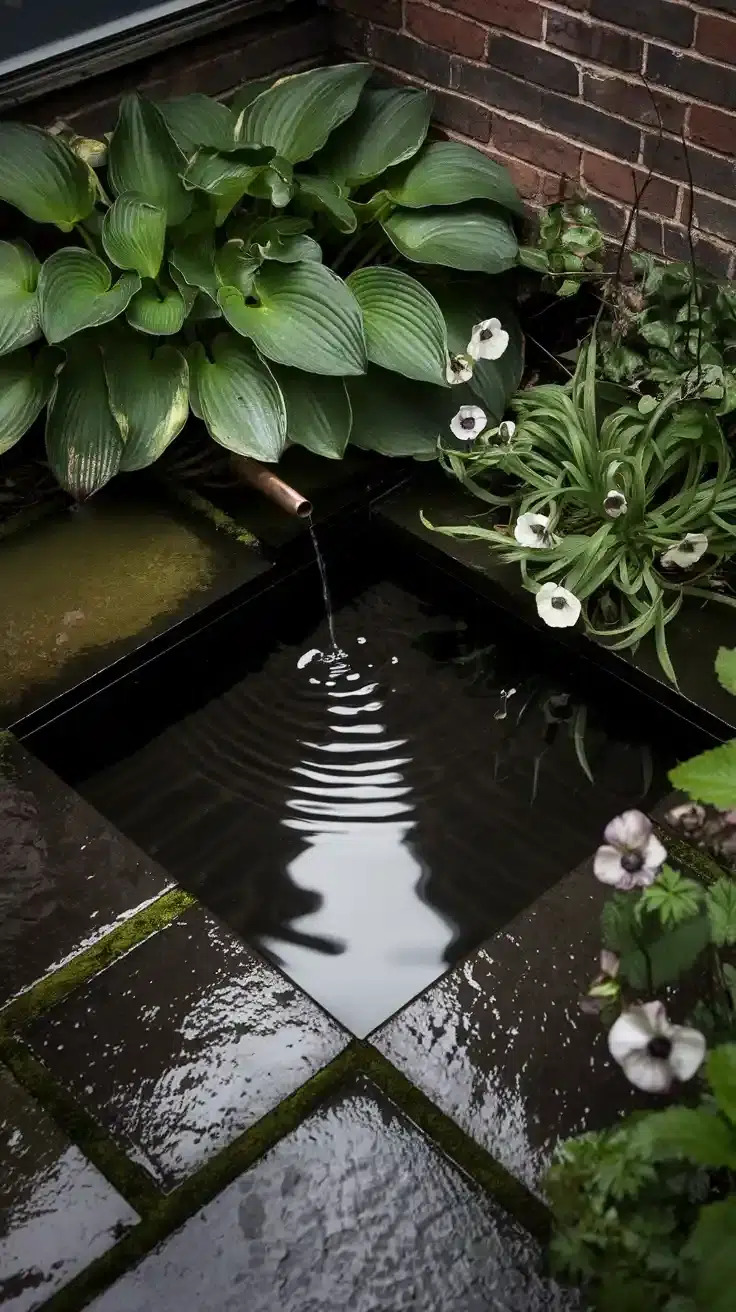
Modern water features whisper instead of shout. Still pools reflect sky. Thin rills carry water between levels. Sheet fountains create walls of gentle sound. The drama turns inward.
Italian garden minimal water design serves contemplation. You notice subtle ripples. Light playing on surface tension. The sound of drops hitting stone. These features invite pause rather than applause.
Installation gets simpler too. Recirculating pumps replace complex plumbing. Solar power runs small fountains. Self-contained units need no major construction. You get Italian style without Italian engineering.
Mass Plantings
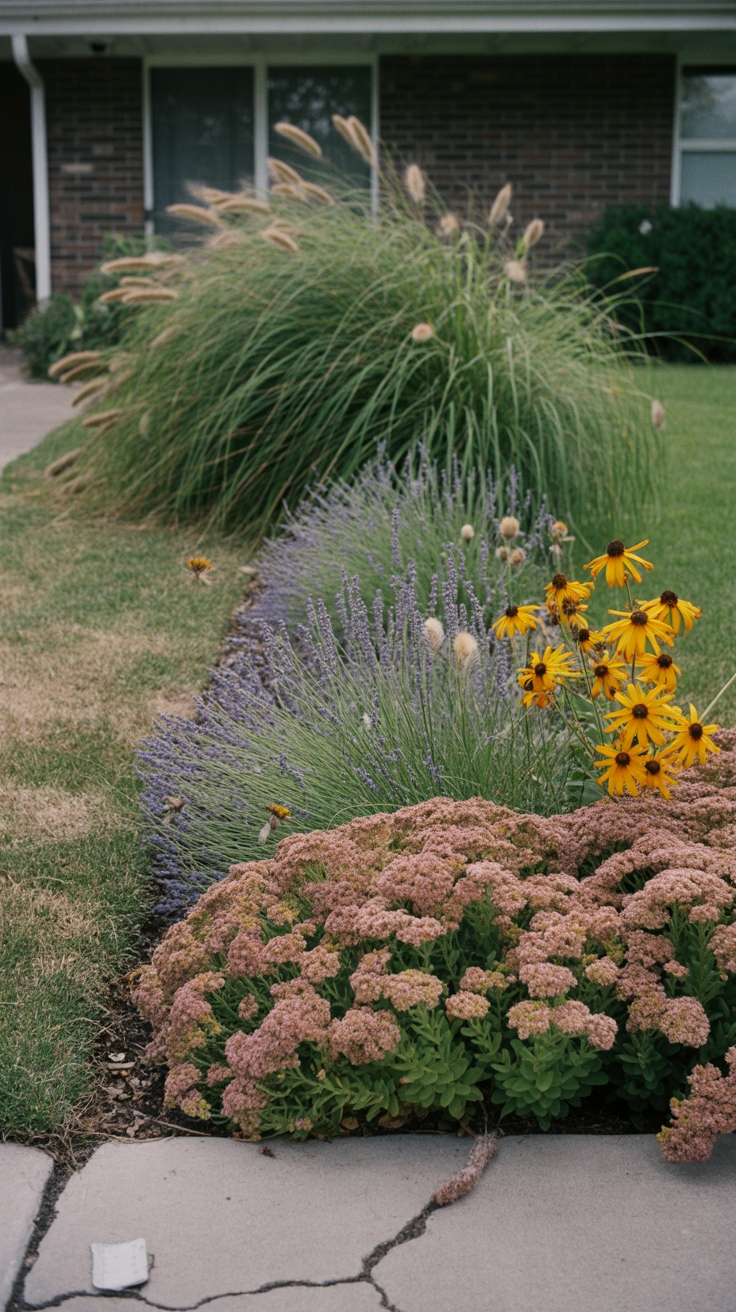
Where traditional gardens used individual specimens, modern designs plant in sweeps. Ornamental grasses flow like water. Lavender creates purple rivers. Sedums carpet ground in textured sheets.
Mass planting looks effortless but requires planning. Choose plants with similar water needs. Group them by height and bloom time. Let them mingle at edges. The effect should feel natural yet intentional.
Maintenance becomes easier too. No individual pruning. Just cut everything back once a year. Let plants find their own balance. Work with their nature rather than against it.
Abstract Expression
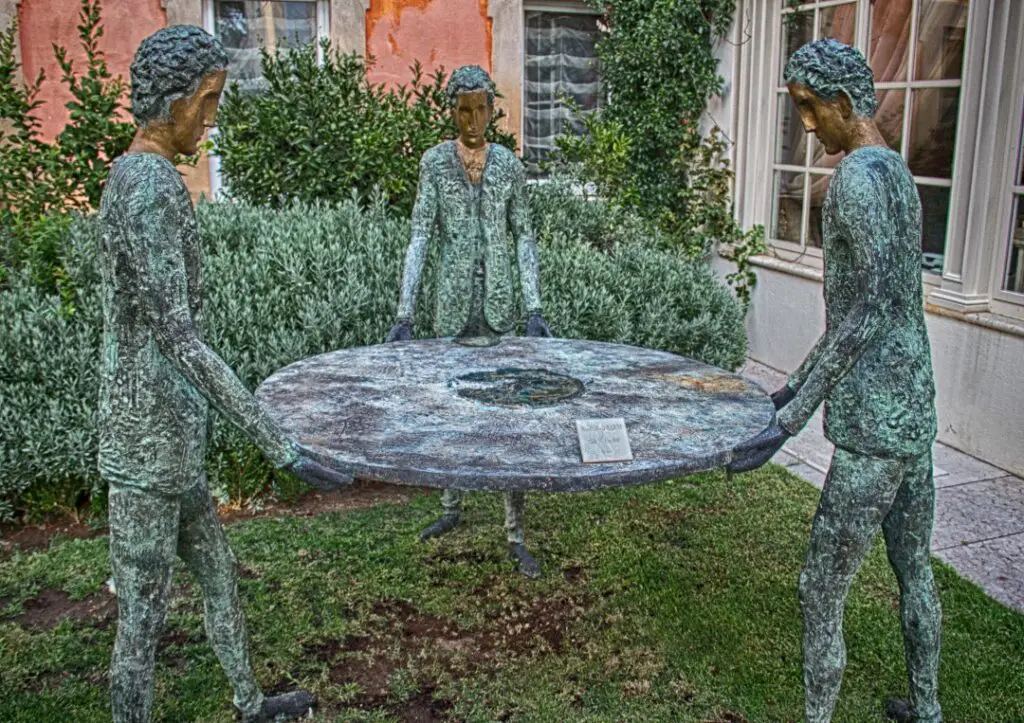
Modern Italian gardens replace classical statuary with contemporary art. Abstract forms in weathering steel. Colored glass catching light. Found objects repurposed as focal points. Personal expression over historical reference.
These pieces don’t need to cost fortunes. Local artists create affordable works. Industrial salvage provides interesting forms. Even carefully placed boulders become sculpture. The key is intentional placement.
Art in modern gardens starts conversations. It reflects owner personality. It changes meaning with viewing angle. Unlike classical statues with fixed stories, abstract pieces let viewers create their own narratives.
Translating Italian Style to Your Residential Garden
Picture this: A 1970s split-level home with small backyard. Homeowner measuring space with tape measure. Existing chain-link fence visible. One corner cleared for new garden bed. Stack of pavers waiting installation. Potted rosemary and lavender still in nursery containers. Shot from kitchen window showing the “before” state with planning in progress.
Assessing Your Space
Start with honest evaluation. Walk your yard at different times. Note where sun hits. Where water pools after rain. Which views you want to hide or highlight.
Italian garden ideas work in any space. But you need to know what you’re working with. Measure everything. Sketch rough dimensions. Mark existing features you’ll keep.
Consider your soil too. Mediterranean plants hate wet feet. Clay soil needs amendment. Sandy soil drains too fast. Know your challenges before you start planting.
Climate matters. True Mediterranean plants thrive in zones 8-10. But many alternatives exist for colder regions. Russian sage replaces lavender. Boxwood substitutes for bay laurel. You can get the look anywhere.
Choosing Your Approach
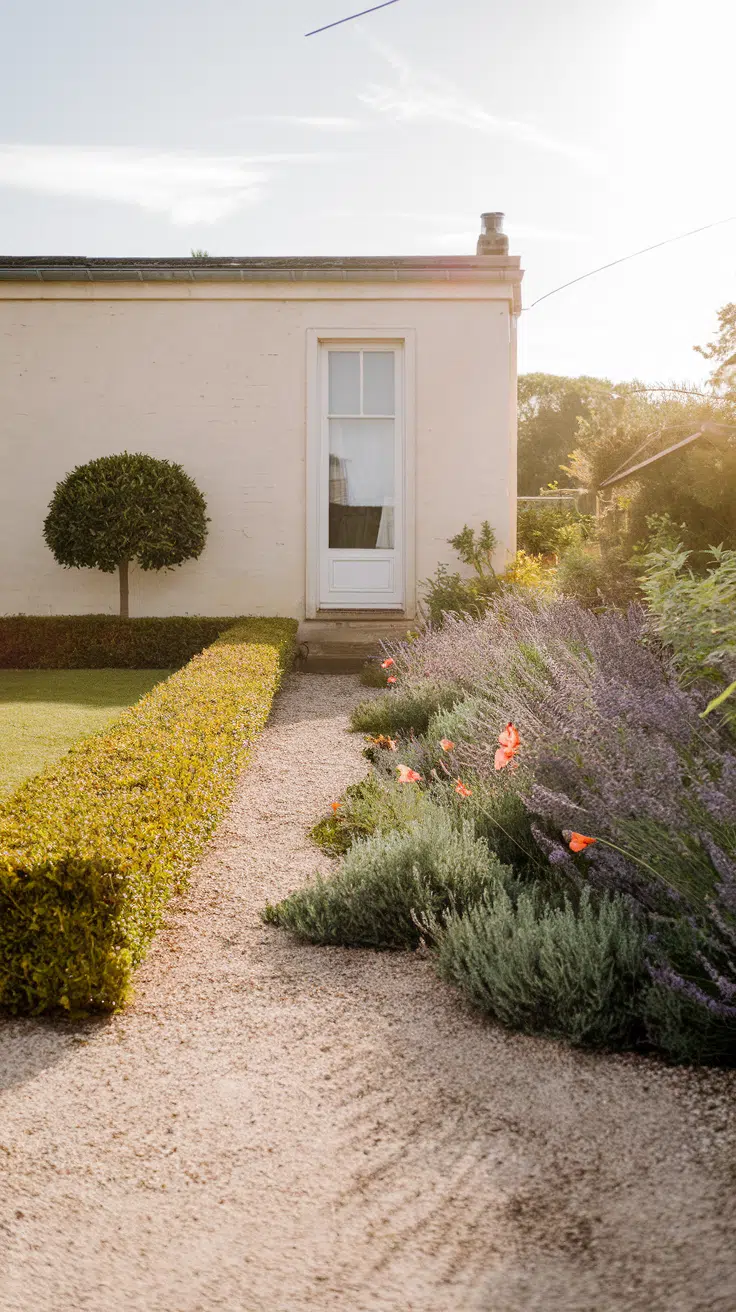
Traditional or modern? Formal or relaxed? Your house style offers clues. A colonial home suits symmetrical design. A ranch house works with flowing lines. But rules can bend.
Think about maintenance honestly. Traditional Italian garden landscaping demands constant care. Hedges need trimming. Gravel needs raking. Fountains require cleaning. Modern designs forgive neglect better.
Consider how you’ll use the space. Formal gardens impress guests but feel stiff for family barbecues. Relaxed designs invite daily use but might lack drama for special occasions. Maybe you need both.
Scale and Proportion
Grand Italian gardens sprawl across acres. Yours might cover 400 square feet. No problem. The principles scale down beautifully.
Use the rule of thirds. Divide spaces into three parts. Make focal points occupy one third. Let negative space breathe. This creates balance without overwhelming small areas.
Vertical elements add grandeur to tiny spaces. A tall cypress in a corner. A wall fountain on the patio. An arbor creating height. Think up when you can’t spread out.
Creating Focal Points
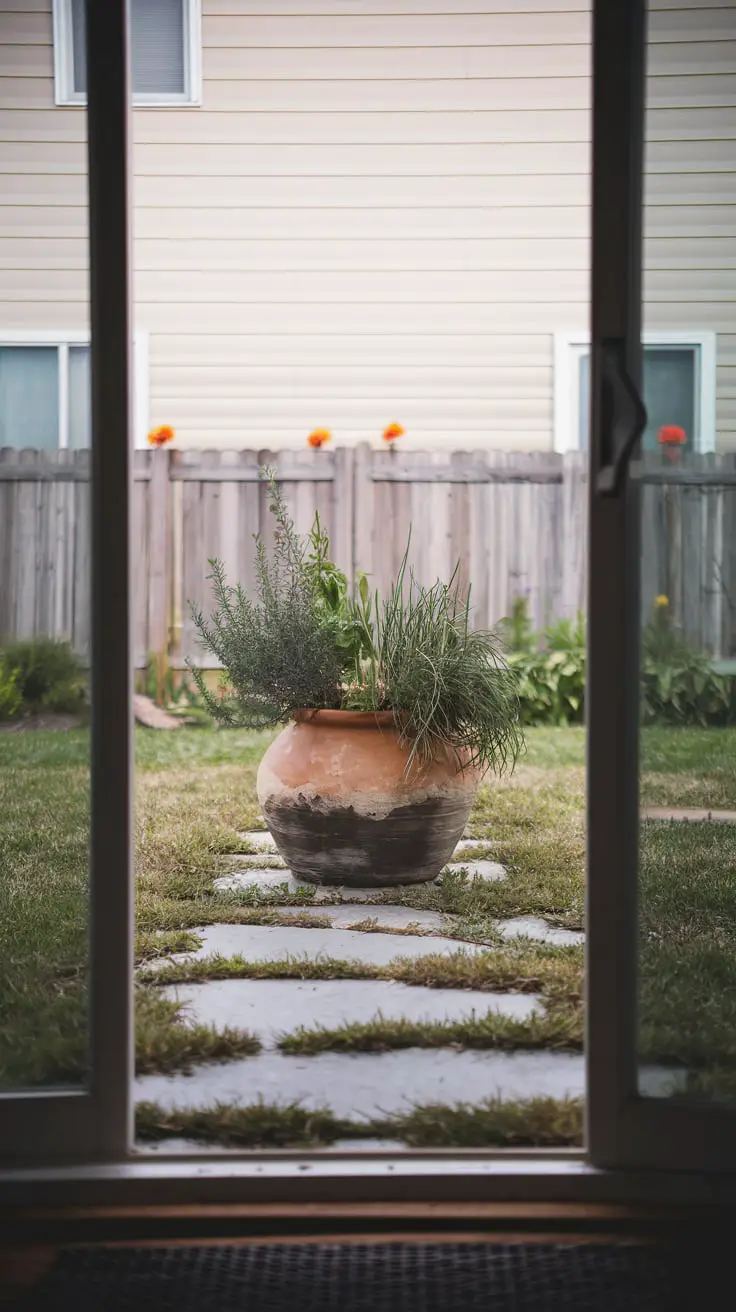
Every Italian garden design needs an anchor. Something that draws the eye. Traditional gardens used statues or fountains. You have more options.
A single perfect plant works. Maybe a sculptural agave. Or a meticulously pruned olive tree. Even a large terracotta pot filled with herbs commands attention.
Position focal points carefully. Place them at path intersections. At the end of sight lines. Where they’re visible from inside. Make people want to move toward them.
Budget-Friendly Alternatives
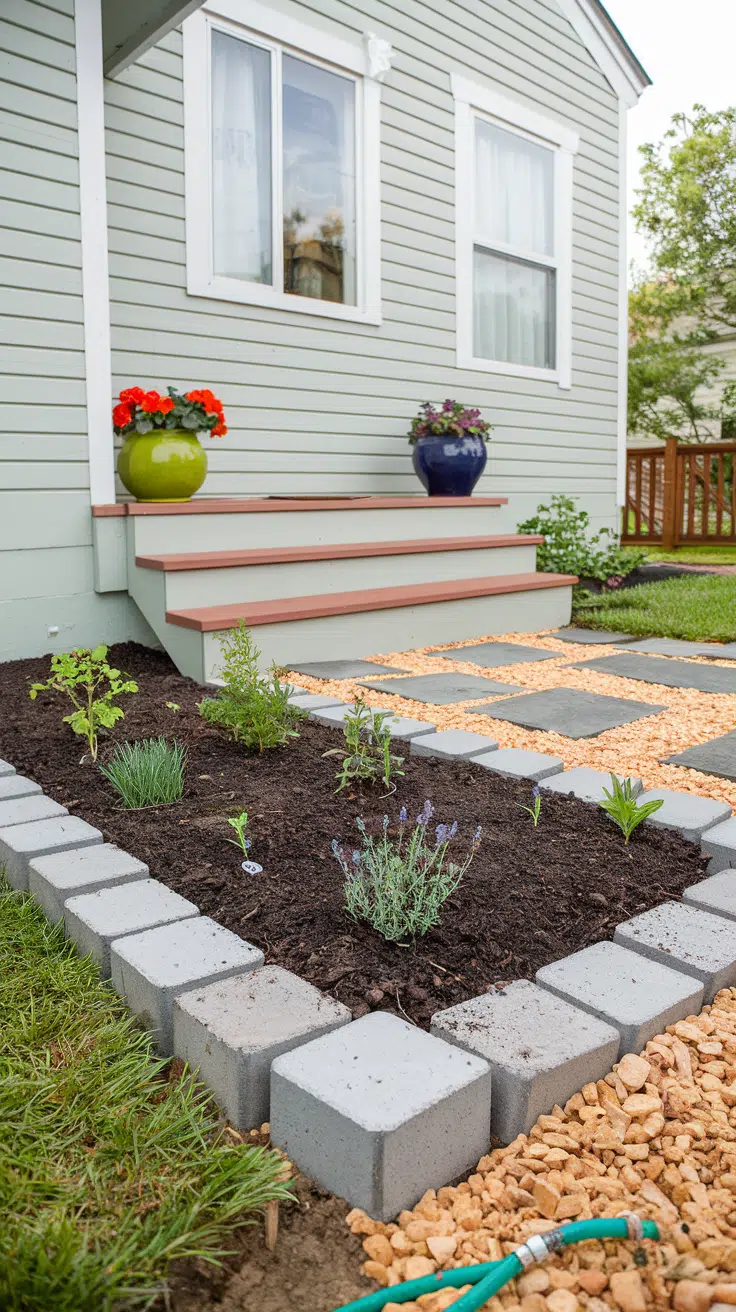
Italian style doesn’t require Italian prices. Smart substitutions save thousands. Concrete pavers mimic stone. Pea gravel replaces decomposed granite. Ceramic pots stand in for terracotta.
Buy small plants. Mediterranean species grow fast in the right conditions. That tiny rosemary becomes a shrub in two years. Lavender fills out quickly. Patience pays off.
Do work yourself where possible. Laying pavers isn’t rocket science. Building raised beds takes basic tools. Installing drip irrigation saves money and water. YouTube University teaches everything.
Italian Garden Ideas for Every Space
Picture this: A cookie-cutter subdivision backyard. Previous owner’s swing set removed, bare patch visible. New gravel path half-finished. Three olive trees in containers waiting to be planted. Mismatched outdoor furniture temporarily arranged. String lights hung but not straight. Shot from back door showing work in progress on a Saturday morning.
Backyard Transformations
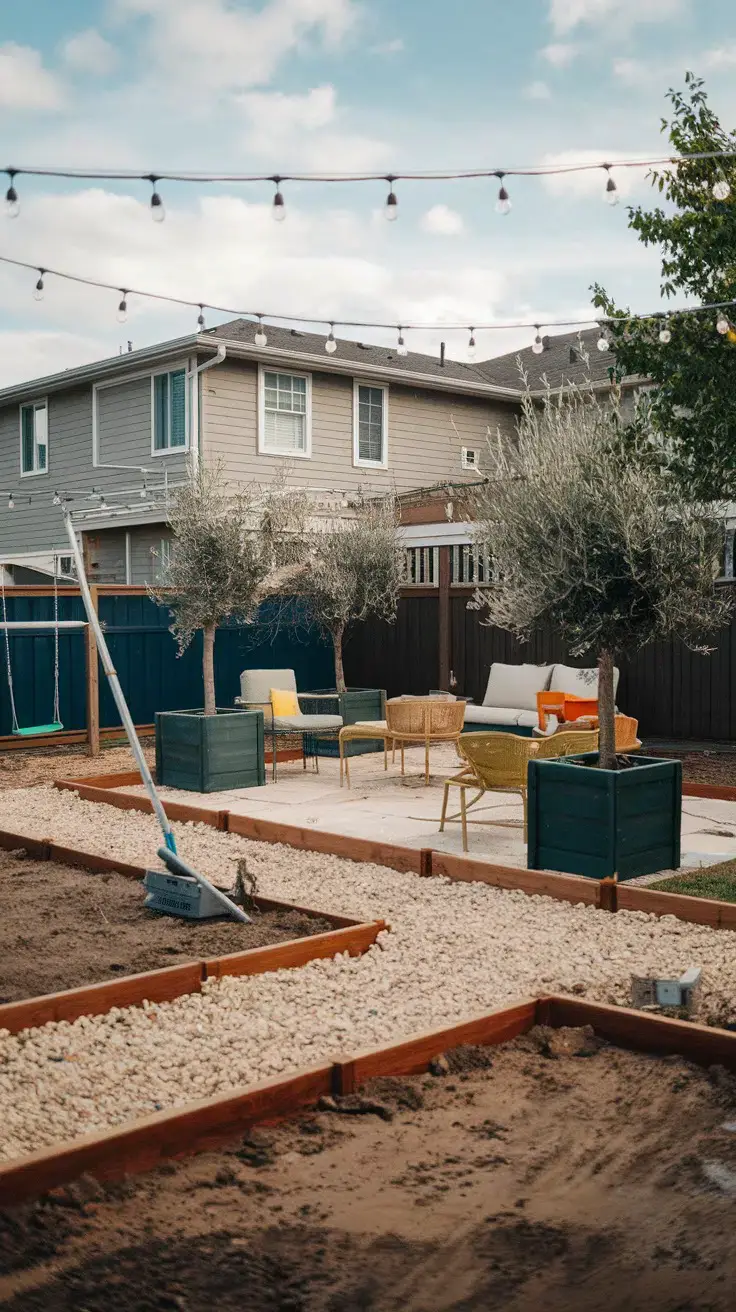
Your backyard can become a private villa garden. Start with structure. Define spaces using hedges, walls, or level changes. Create an outdoor dining room. Add a lounging area. Maybe include a kitchen garden.
Italian garden backyard designs focus on outdoor living. Install a pergola for shade. Add a pizza oven if you’re ambitious. String lights overhead. Make it somewhere you want to spend evenings.
Use classic Italian plants adapted to your climate. Olive trees in containers. Herbs in raised beds. Climbing roses on arbors. Mix edibles with ornamentals like Italians do.
Water features transform ordinary yards. Even a small wall fountain adds Italian character. The sound masks neighborhood noise. Moving water cools the air. It becomes your backyard’s heartbeat.
Courtyard Magic
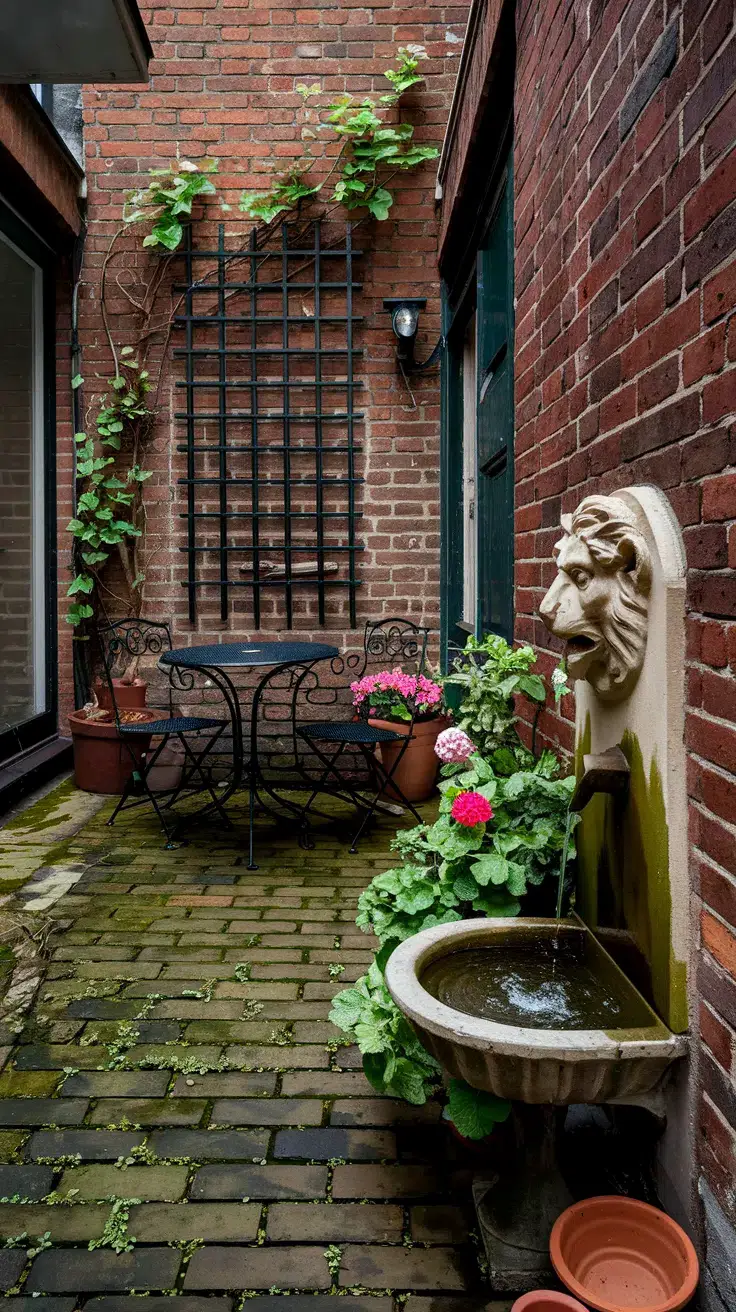
Small enclosed spaces suit Italian garden courtyard design perfectly. These intimate gardens focus inward. Every element counts when space is limited.
Pave most of the ground. Use gravel, brick, or stone. Leave planting pockets for accent plants. This maximizes usable space while minimizing maintenance.
Go vertical. Train vines up walls. Hang planters at different heights. Install a wall fountain. Use mirrors to double visual space. Layer elements for richness.
Choose furniture carefully. A small bistro set fits better than loungers. Folding chairs store easily. Built-in benches save floor space. Keep proportions in mind.
Balcony Gardens
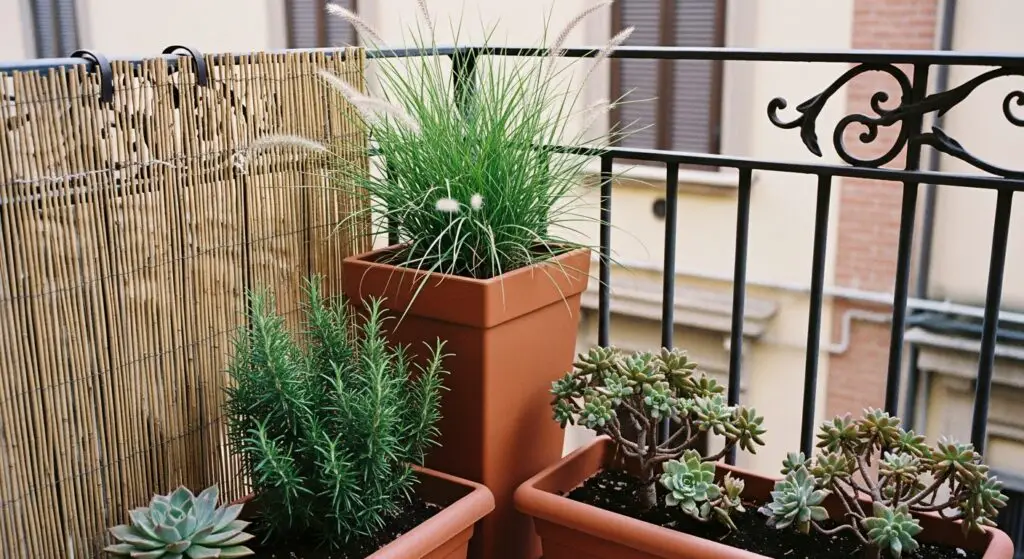
Italian garden balcony design brings Mediterranean style to apartment living. Weight limits and wind exposure create challenges. But solutions exist.
Use lightweight containers. Resin mimics terracotta without the weight. Fiberglass planters look like concrete. Group pots for impact. Vary heights for interest.
Select wind-resistant plants. Rosemary handles breeze better than tall flowers. Succulents stay low and sturdy. Ornamental grasses bend without breaking. Think tough.
Create privacy with plants. Bamboo in planters forms quick screens. Climbing vines on trellises block views. Even tall grasses provide separation. Your balcony becomes a secret garden.
Front Yard Appeal
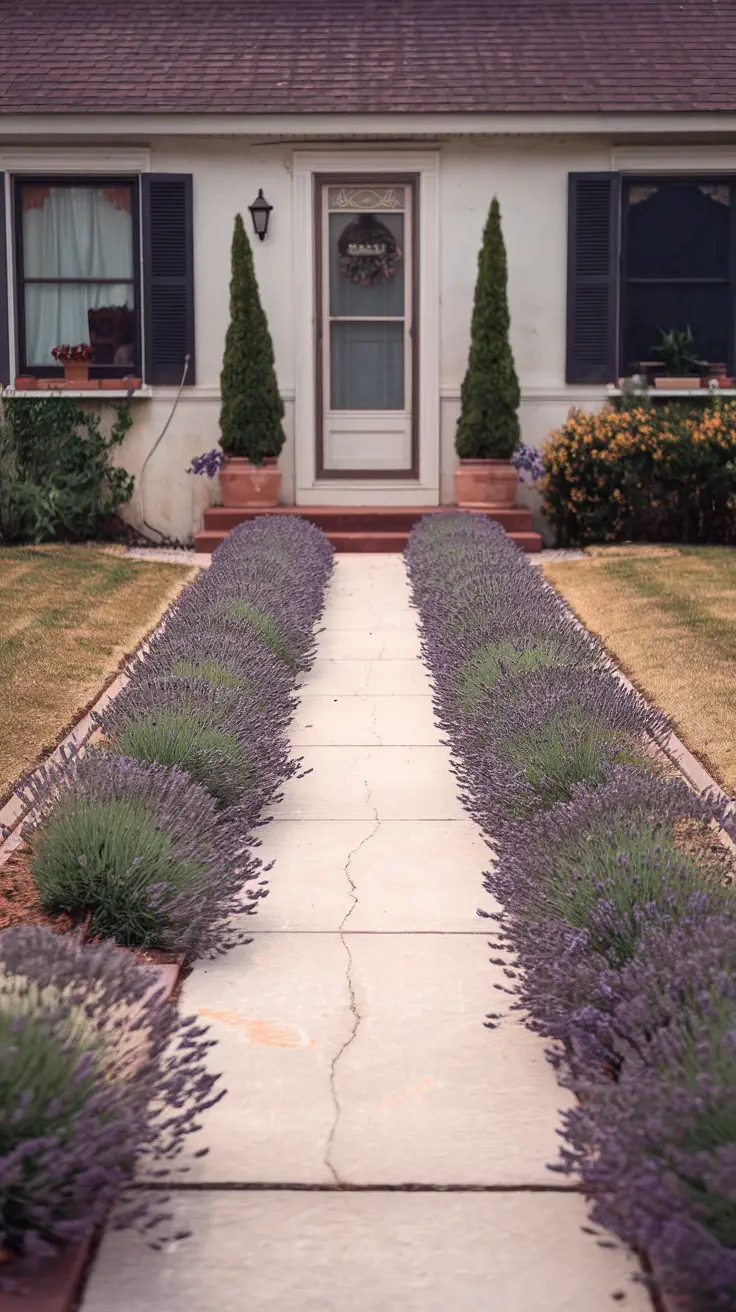
Italian garden front yard designs make stunning first impressions. But they need to function too. Consider maintenance. Think about curb appeal. Plan for all seasons.
Symmetry works well in front yards. Matching plants frame the entrance. A central path leads to the door. Balance feels welcoming and organized.
Keep plantings simple. A few well-chosen specimens beat crowded beds. Maybe two Italian cypress flanking the door. Lavender lining the walk. A single olive tree as focal point.
Hardscaping adds year-round structure. Stone or brick paths. Low walls defining beds. A small fountain near the entrance. These elements look good even when plants are dormant.
Garden Nooks
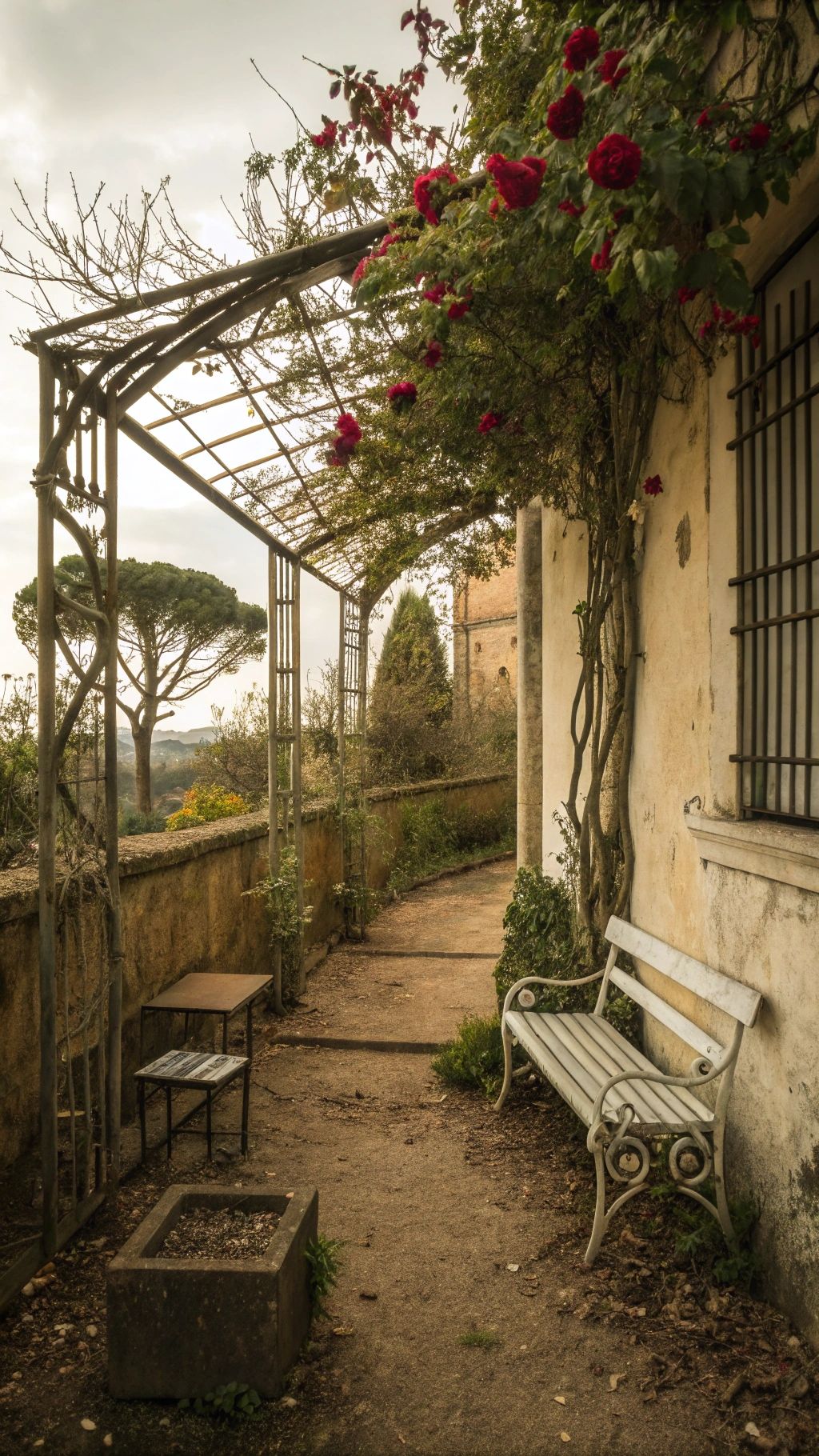
Every garden needs intimate spaces. Italian garden nook designs create destinations. Places to pause. Read. Sip wine. Watch birds.
Carve out corners using plants or structures. A bench beneath an arbor. Two chairs beside a small fountain. A meditation spot surrounded by fragrant herbs. Size doesn’t matter. Atmosphere does.
Add comfort elements. Cushions on benches. A small table for drinks. Maybe a shade umbrella. These touches invite lingering. They transform leftover spaces into favorite spots.
Essential Features and How to Implement Them
Picture this: A suburban home’s side yard. Homeowner installing a wall fountain, level slightly off. Bags of gravel partially spread on pathway. New lavender plants, some wilting from transplant shock. Terracotta pots with price tags still attached. Extension cord running to fountain pump. Shot from above showing DIY installation reality.
Water Features
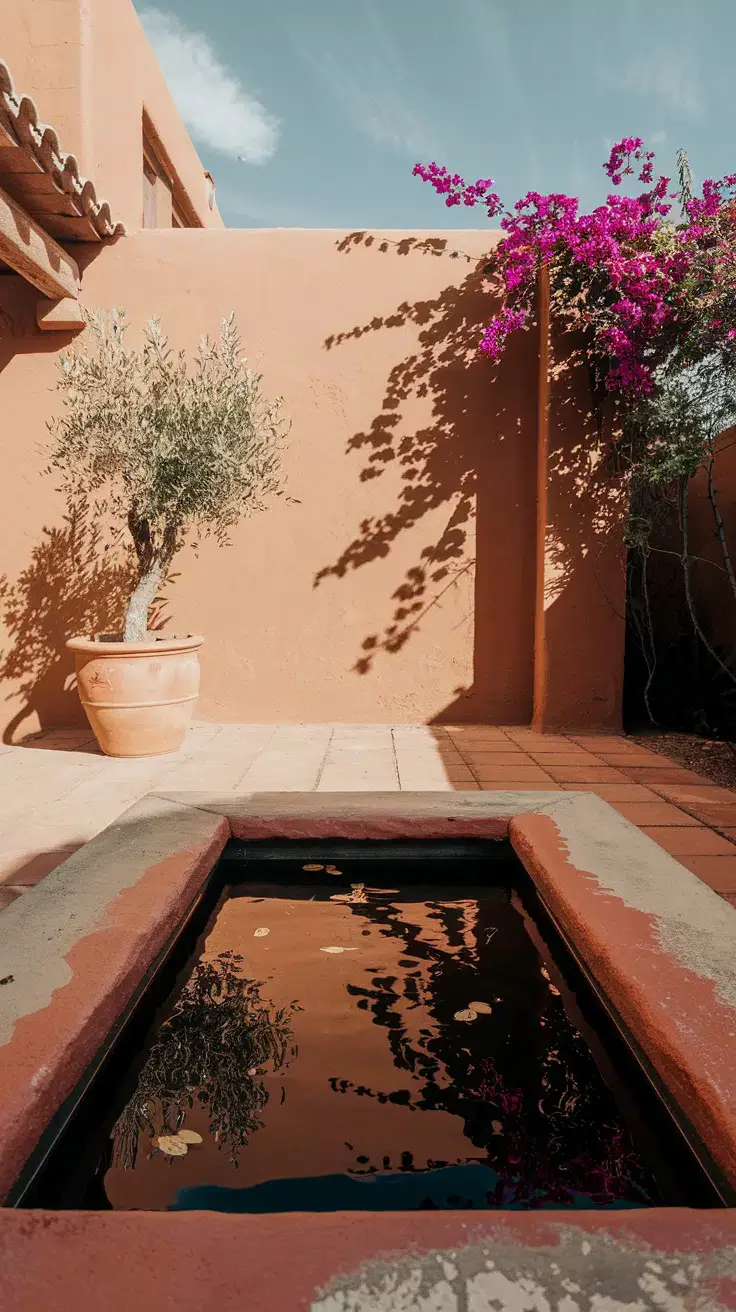
As mentioned above, water brings Italian garden features to life. Options range from grand to simple. Choose based on space, budget, and maintenance tolerance.
Wall fountains work everywhere. They take minimal space. Installation requires basic plumbing skills. Many come as complete kits. Just hang, fill, and plug in.
Freestanding fountains make bigger statements. Place them as focal points. Surround with gravel or paving. Add plants in containers. The fountain becomes a destination.
For modern gardens, try reflecting pools. Shallow basins catch sky. Still water creates calm. Add a small bubbler for gentle movement. Maintenance stays minimal.
Hardscaping
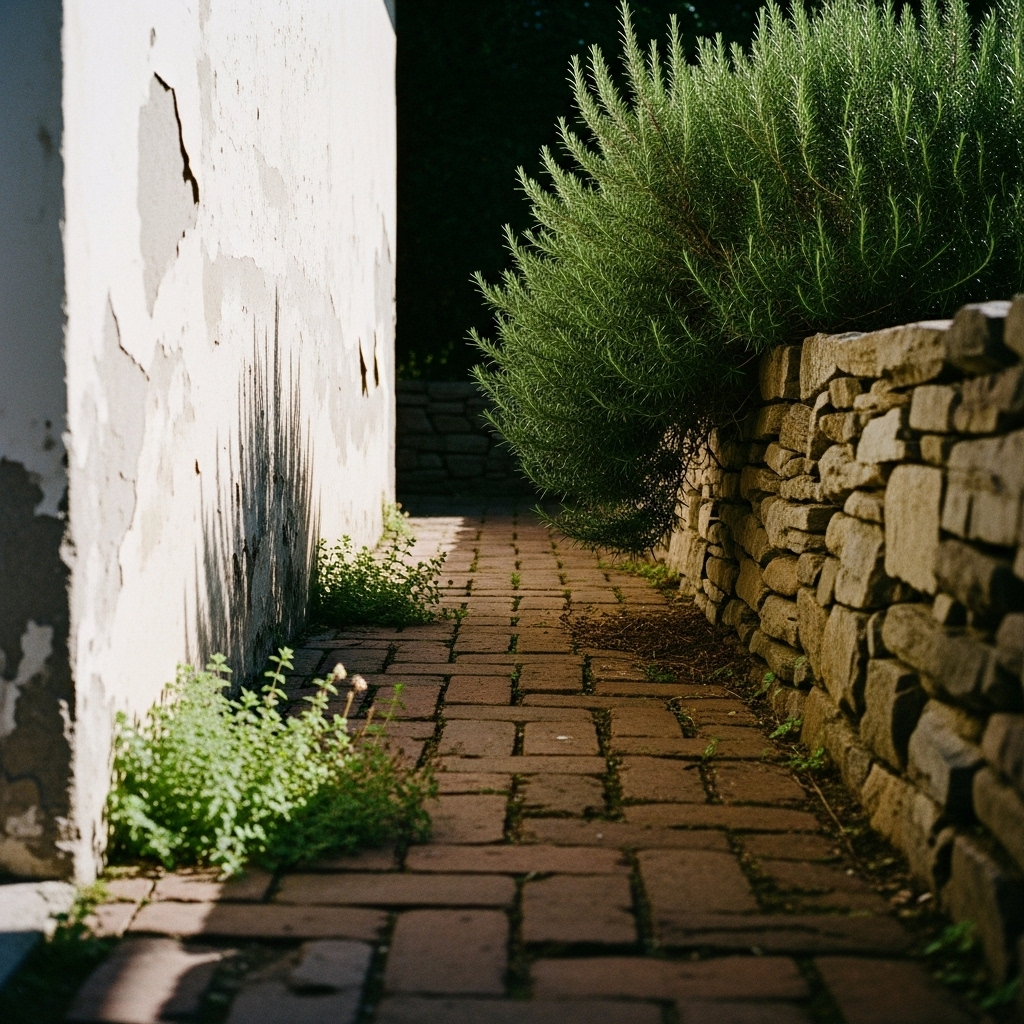
Paths, patios, and walls form your garden’s bones. Italian garden landscape design depends on good hardscaping. It provides structure when plants die back.
Start with main pathways. Connect house to garden destinations. Make them wide enough for two people. Use materials that complement your home. Gravel costs less but needs edging.
Add secondary paths for exploration. These can be narrower, more casual. Stepping stones through ground cover. Mulch paths through planted areas. They invite wandering.
Walls and edges define spaces. Even low walls make strong statements. Stack stone without mortar for easy DIY. Use concrete blocks faced with stucco. Paint them to match your house.
Plant Selection
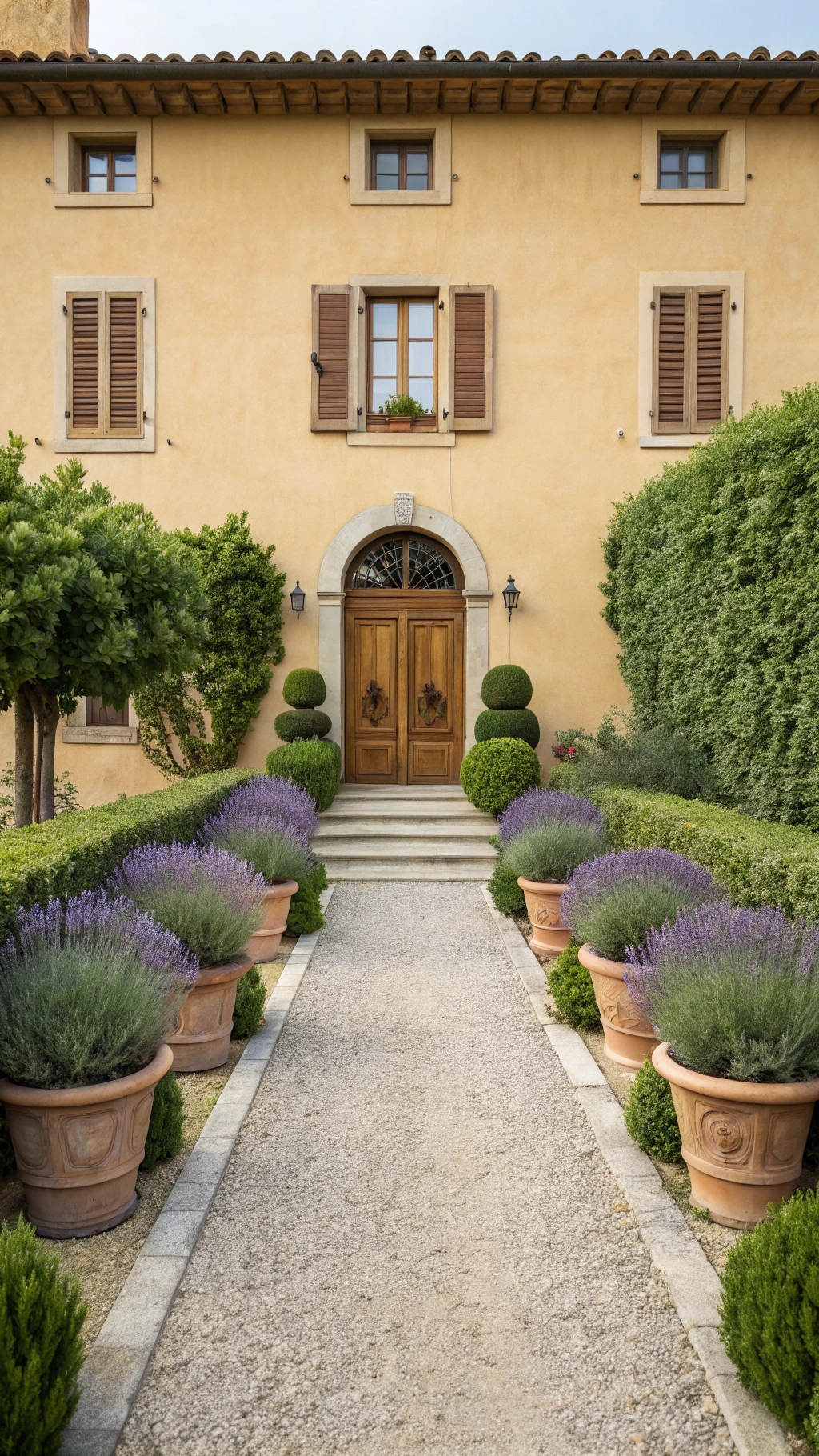
Choosing plants makes or breaks Italian garden inspiration. Mediterranean natives grow best in similar climates. But alternatives exist everywhere.
Start with structure plants. Evergreens that hold their shape. Italian cypress for vertical accents. Boxwood for low hedges. Bay laurel for topiary. These form your garden’s architecture.
Add texture with gray-leaved plants. Lavender, santolina, and artemisia all work. Their silver foliage cools hot colors. It glows in evening light. Plus, most are drought-tolerant.
Include herbs for authentic Italian character. Rosemary becomes a landscape shrub. Thyme carpets ground. Oregano spills over walls. You get beauty plus cooking ingredients.
Garden Decor
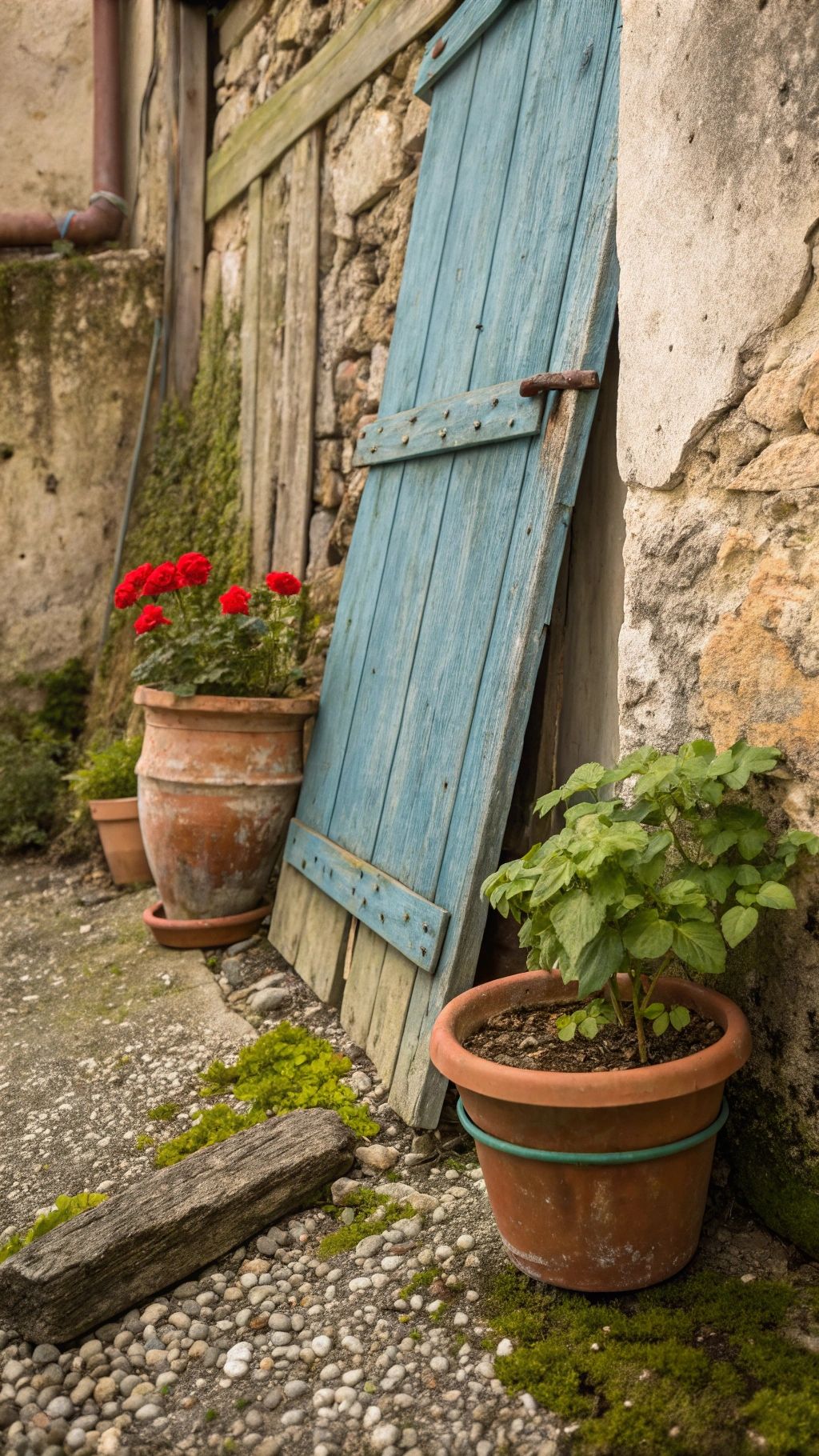
Italian garden decor adds personality without overwhelming. Choose pieces that enhance rather than dominate. Quality beats quantity every time.
Containers matter most. Terracotta pots age beautifully. Group different sizes together. Use them as sculptural elements even when empty. Italian gardens always feature beautiful containers.
Add architectural salvage for character. Old stone pieces. Weathered shutters as garden art. Antique iron gates as trellises. These elements add instant history.
Avoid cutesy decorations. No gnomes or whirligig flowers. Italian style stays sophisticated. Choose decor that could have existed 400 years ago. Or sleek modern pieces. Nothing in between.
Lighting
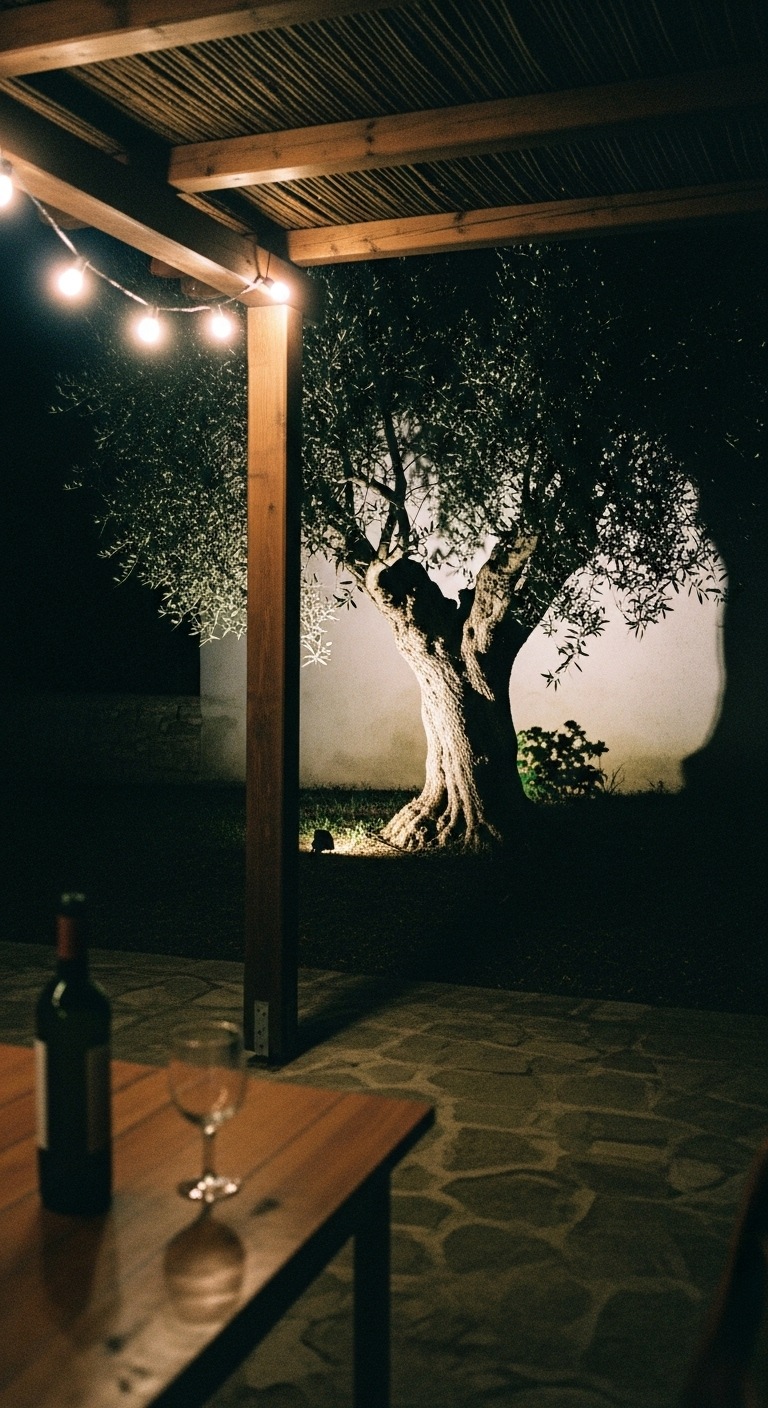
Evening transforms Italian gardens. Proper lighting extends usable hours. It adds drama. Creates mystery. Makes small spaces feel larger.
Uplight trees and architectural plants. Place fixtures at the base pointing up. This creates dramatic shadows. Highlights texture. Makes plants look sculptural.
Path lights ensure safety while adding ambiance. Space them irregularly for natural effect. Use warm white bulbs. Avoid bright, harsh lighting. You want romance, not runway lights.
String lights bring instant charm. Hang them overhead in dining areas. Wrap tree trunks. Edge pergolas. They create a ceiling of stars. Perfect for Italian-style entertaining.
Low-Maintenance Italian Garden Solutions
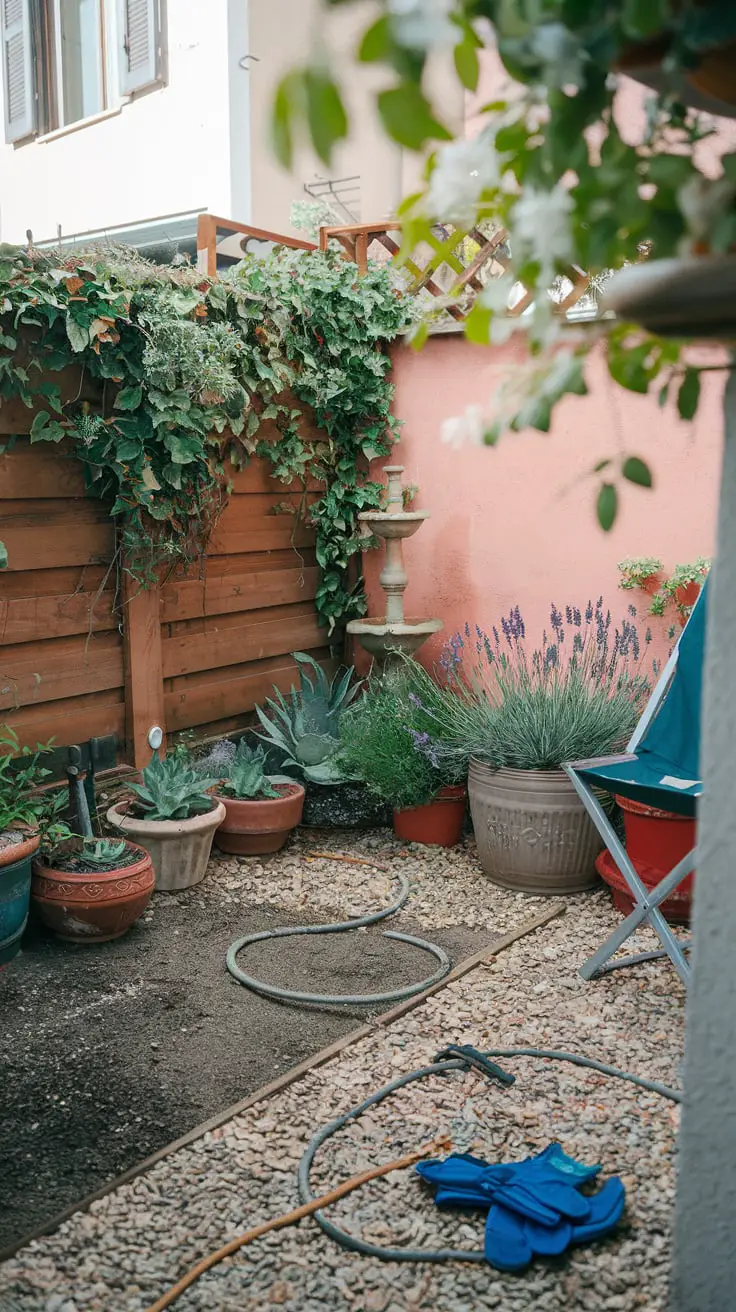
Smart Plant Choices
As we have seen in the previous section plants are crucial to the look and feel of creating an Italian garden aesthetic. For Italian garden with minimal maintenance Mediterranean natives evolved in tough conditions are a good start. They laugh at drought. Shrug off poor soil. Thrive on neglect.
Lavender tops the list. Plant it and forget it (except if you live in a zone with harsh winters). Trim once yearly after blooming. No water after establishment. No fertilizer needed. It even repels deer and rabbits.
Rosemary grows into a handsome shrub. Needs zero summer water in most climates. Pruning is optional. Let it sprawl naturally. Or shape it into a hedge. Your choice.
Santolina forms perfect silver mounds. Artemisia adds feathery texture. Cistus blooms without care. These plants want good drainage and full sun. Give them that and they’re happy.
Hardscaping Over High-Maintenance Plantings
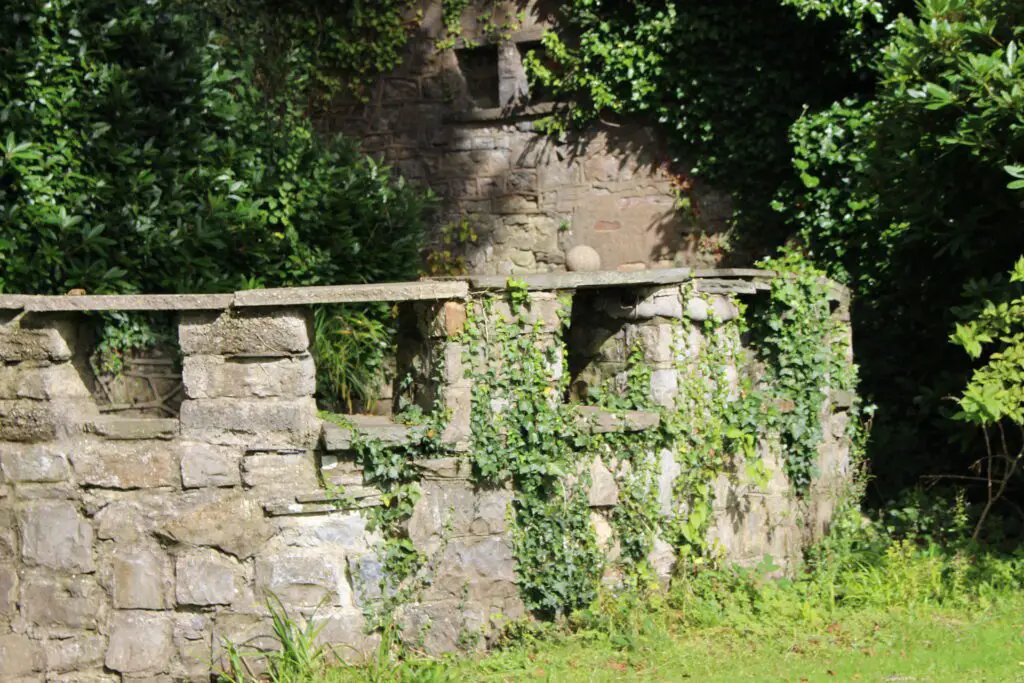
Replace lawn with gravel. Instantly, you’ve cut maintenance by 90%. No mowing. No watering. No fertilizing. Just occasional raking to keep it neat.
Italian garden landscaping ideas often feature more stone than plants. Decomposed granite pathways. Pea gravel patios. Flagstone terraces. These surfaces look better with age.
Use pavers to create patterns. Lay them in sand for easy installation. Leave gaps for creeping thyme. It releases fragrance when stepped on. Fills spaces without needing care.
Build raised beds with stone or concrete blocks. Fill with well-draining soil mix. Plant once and enjoy for years. Raised beds also save your back during occasional maintenance.
Container Gardens
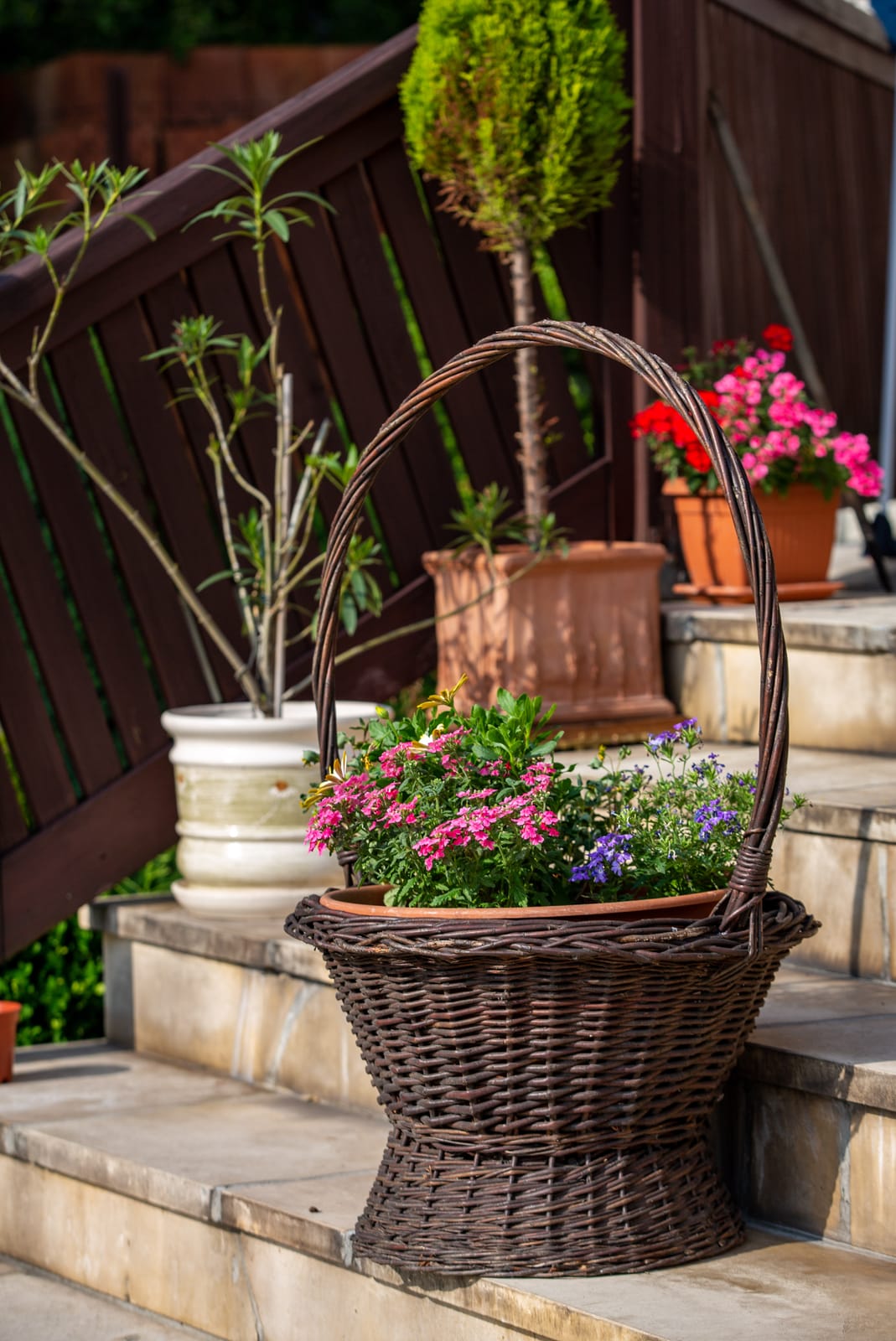
Pots give you Italian garden outdoor style with maximum flexibility. Move them seasonally. Rearrange for parties. Take them when you move. Ultimate garden freedom.
Choose large containers. They hold moisture longer. Provide root room. Look more substantial. One big pot makes more impact than five small ones.
Use quality potting mix. Add water-holding crystals if you’re forgetful. Mulch the top with gravel. It looks finished and reduces evaporation. Smart and stylish.
Group containers for Italian abundance. Mix heights and sizes. Include one thriller plant. Add fillers around it. Let spillers cascade over edges. Classic container recipe.
Artificial Elements
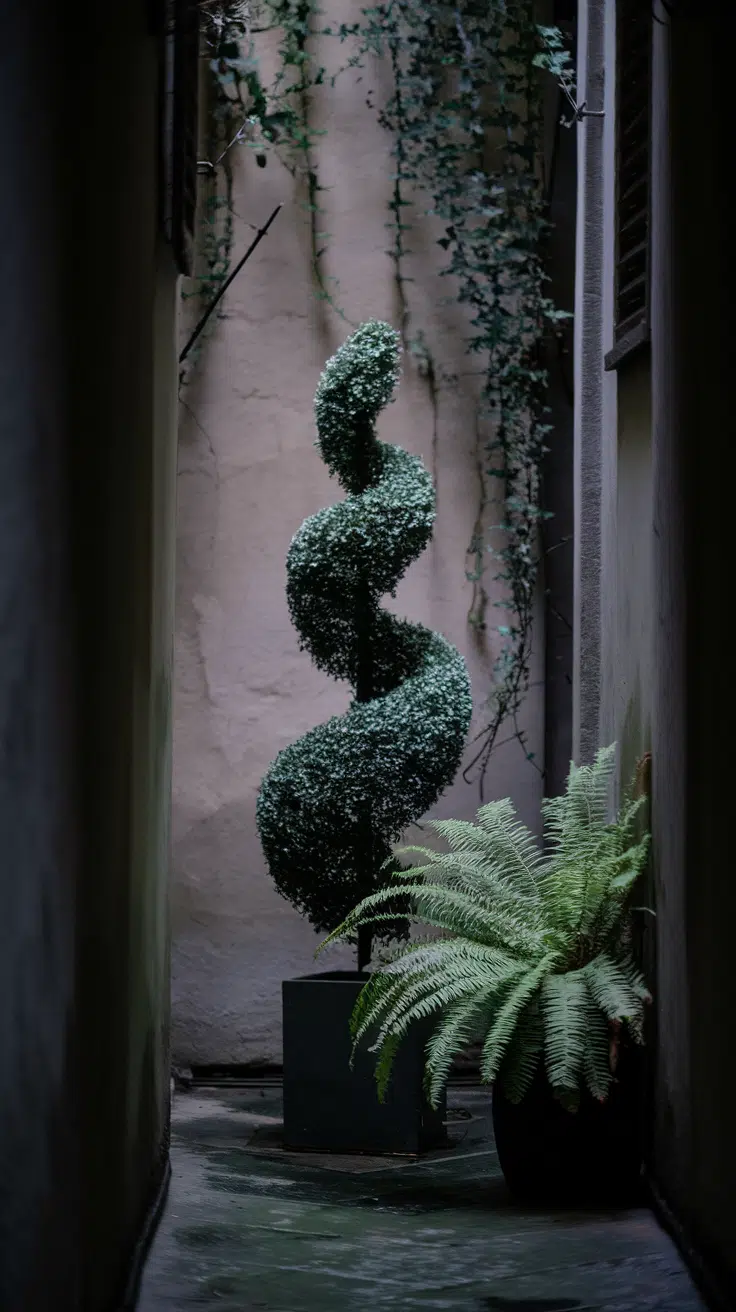
Sometimes fake makes sense. Modern artificial plants fool everyone. Use them in impossible spots. Deep shade. Windy balconies. Where nothing real survives.
Quality matters here. Cheap plastic screams fake. Good artificial plants cost more but look real. Dust them occasionally. Replace when they fade. No shame in practical solutions.
Artificial turf technology has improved dramatically. New versions drain well. Feel realistic. Stay green without water or mowing. Perfect for small courtyards or play areas.
Mix artificial with real for best results. Real plants where they’ll thrive. Artificial where they won’t. Nobody needs to know your secret. You get Italian style without the struggle.
Simplified Water Features
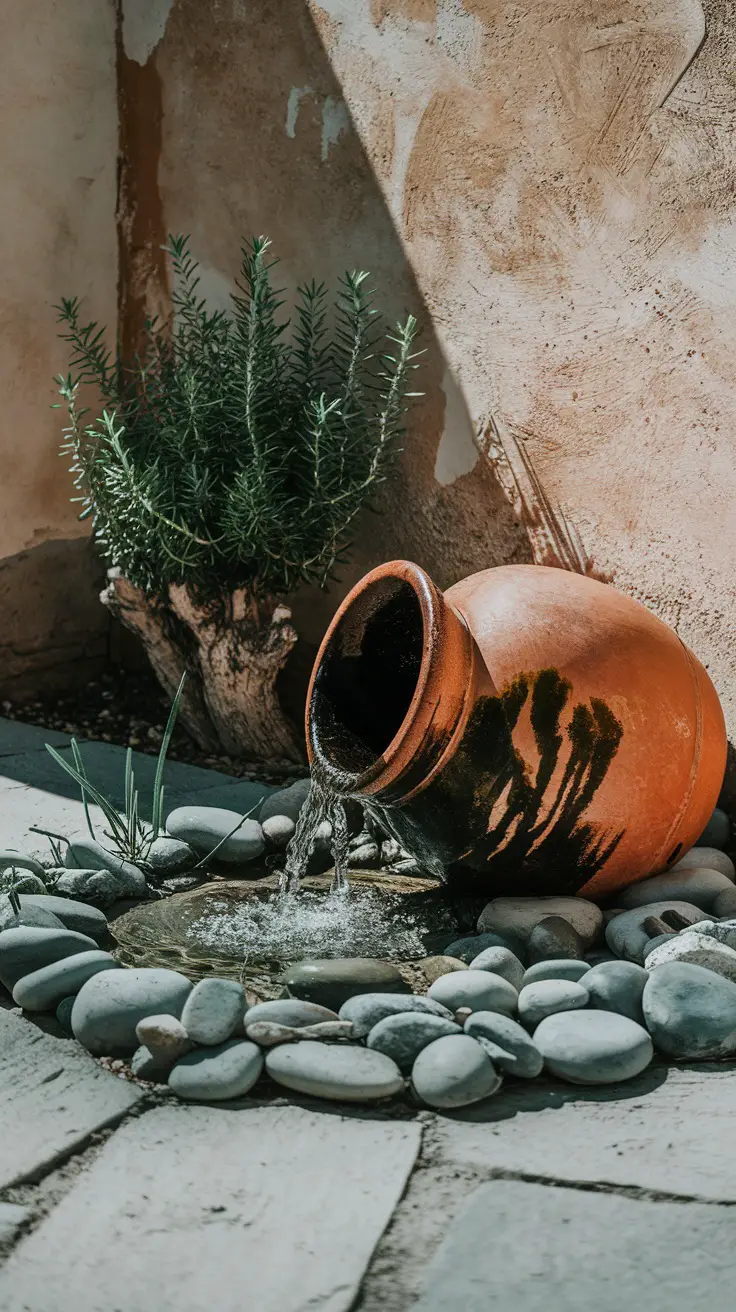
Self-contained fountains revolutionized water features. No plumbing needed. Just fill and plug in. Move them seasonally. Take them inside during freezing weather.
Solar fountains work well in sunny spots. No electrical cords. No operating costs. They run when the sun shines. Perfect for Mediterranean-style gardens that bask in sunlight.
Pondless water features reduce maintenance further. Water disappears into hidden reservoirs. No algae problems. No mosquito breeding. Just the sound and movement of water.
Choose simple designs. Avoid fountains with tiny holes that clog. Skip complex multi-tier designs. A single spout into a basin works beautifully. Less to clean. Less to break.
Creating Italian Garden Atmosphere Without Expert Skills
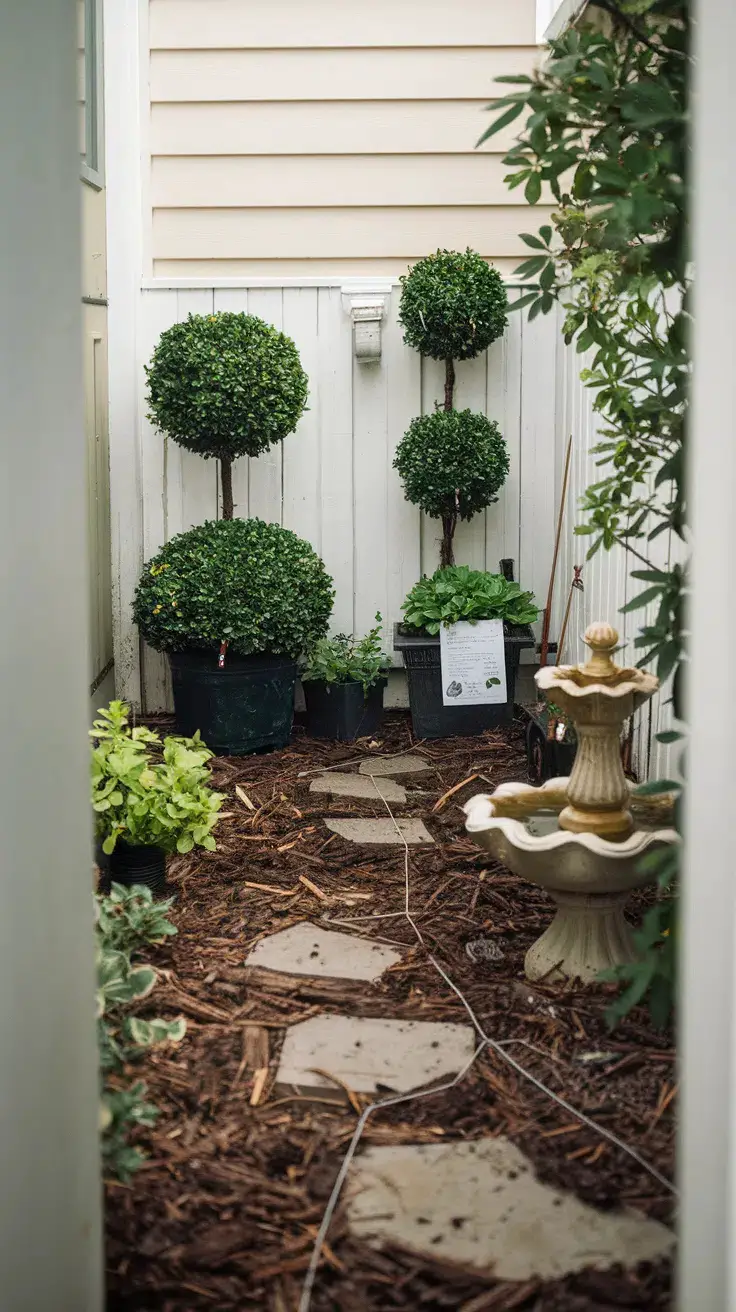
Picture this: A weekend gardener’s backyard. Pre-formed topiary balls from the garden center, tags removed. Bagged mulch partially spread. String line marking a crooked pathway. New plants still in plastic pots arranged experimentally. Instruction sheet for fountain assembly weighted down with a rock. Shot from patio door showing earnest DIY efforts.
The Power of Structure
Hardscaping creates instant Italian garden aesthetic. You don’t need plant knowledge. Just basic DIY skills. Structure provides the framework. Plants become decoration.
Start with defining edges. Use plastic edging for curves. Metal edging for straight lines. Even stacked bricks work. Clean edges make everything look intentional and maintained.
Add vertical elements immediately. A simple arbor. Tall planters. Even bamboo poles for temporary height. Vertical features draw eyes up. Make small spaces feel larger.
Gravel transforms spaces overnight. Lay landscape fabric first. Spread gravel evenly. Add stepping stones for paths. You’ve created structure that looks good empty or planted.
Strategic Plant Placement
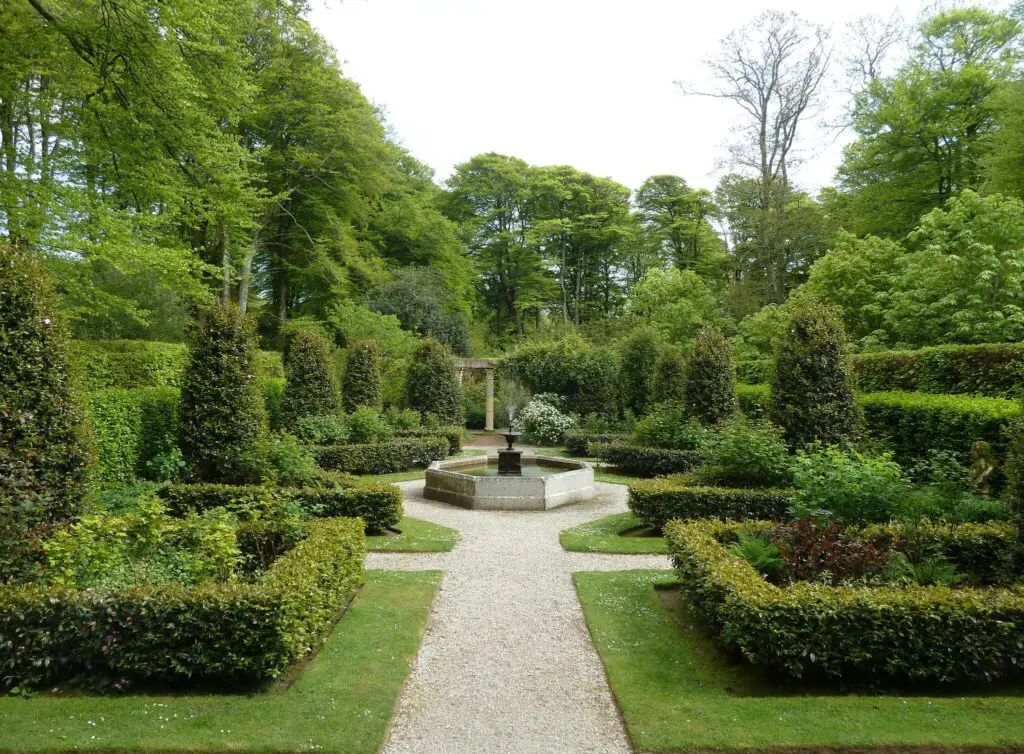
Less really is more in Italian garden design ideas. Five well-placed plants beat twenty scattered ones. Think architecture, not collection.
Plant in odd numbers. Three lavenders. Five boxwoods. One specimen tree. Odd numbers look natural. Even numbers feel forced. Basic design principle that always works.
Repeat plants throughout the garden. Use the same species in multiple spots. It creates rhythm. Ties spaces together. Looks intentional rather than random.
Leave breathing room. Plants grow. They need space. Crowded gardens look messy. Sparse plantings look sophisticated. You can always add more later.
Ready-Made Solutions
Garden centers sell pre-formed topiary. Spiral junipers. Ball-shaped boxwoods. Cone-shaped yews. Instant Italian architecture. Just plant and enjoy.
Buy mature plants when budget allows. A five-gallon olive tree makes immediate impact. Large rosemary already has character. You’re purchasing time, not just plants.
Use nursery design services. Many offer free planning with plant purchases. They know what works locally. Let experts guide your choices. Then do installation yourself.
Pre-planned garden kits exist too. Mediterranean garden in a box. Follow the planting diagram. Everything chosen to work together. Takes guesswork out of design.
Focus on Materials
Let materials do the heavy lifting. Beautiful gravel needs no maintenance. Weathered wood adds instant age. Terracotta pots provide color and texture.
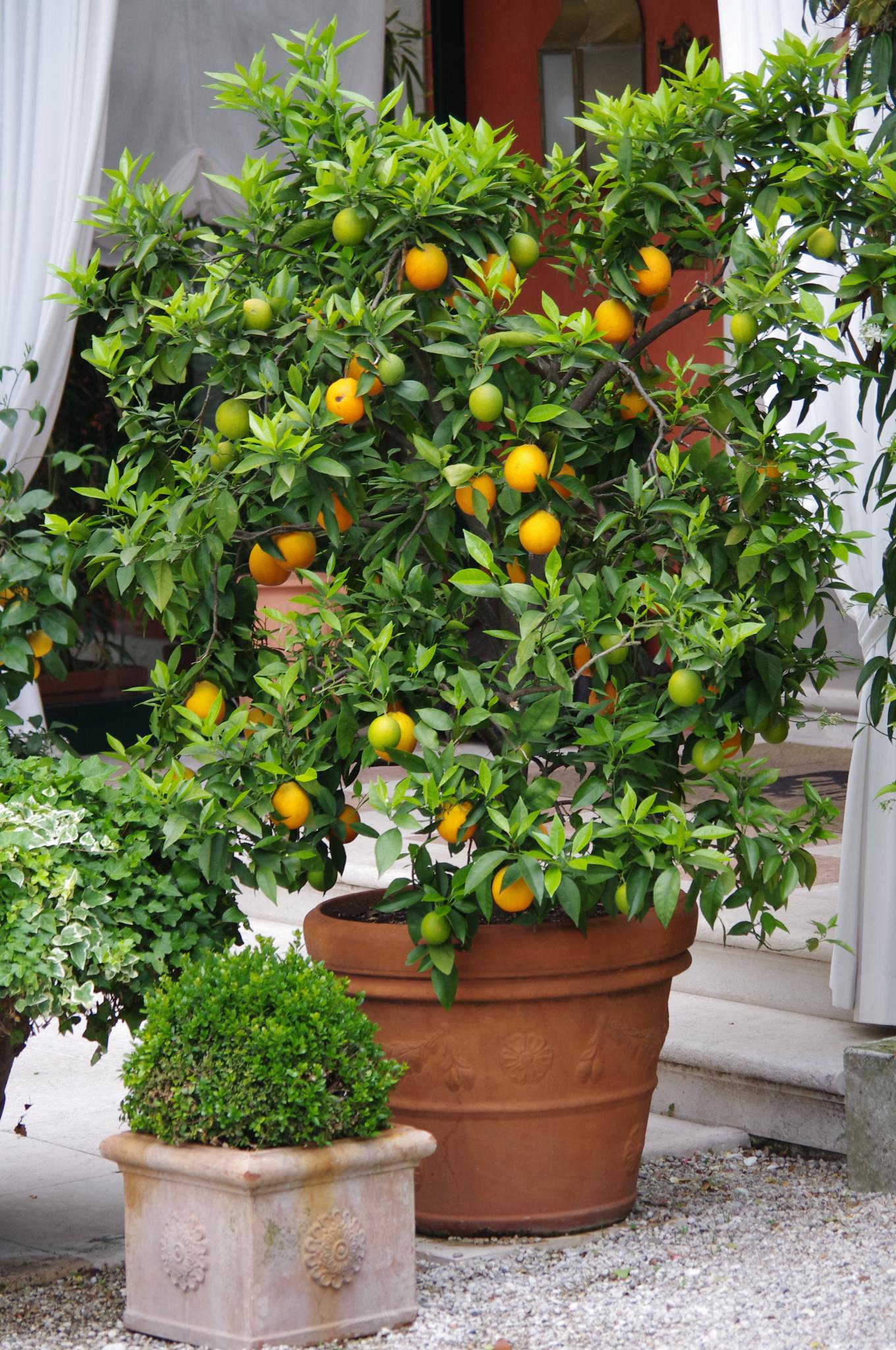
Italian garden elements shine through simplicity. A stone bench. A gravel circle. A terracotta oil jar. These pieces carry Italian style without any plants at all.
Choose one material palette and stick with it. All warm tones. Or all cool grays. Consistency creates sophistication. Mixed materials look chaotic unless carefully planned.
Quality materials age gracefully. Stone develops patina. Wood weathers to silver. Terracotta gains character. Your garden improves over time without effort from you.
Simple Maintenance Routines
Set up systems that work without you. Drip irrigation on timers. Self-watering containers. Mulch that suppresses weeds. Smart setup prevents problems.
Schedule maintenance seasonally, not weekly. Spring cleanup. Summer deadheading. Fall pruning. Winter protection. Four major efforts instead of constant puttering.
Choose tools that make work easier. Long-handled pruners save bending. Ergonomic tools reduce strain. Battery-powered tools eliminate cords. Invest in comfort.
Accept imperfection. Italian gardens evolved over centuries. Yours won’t be perfect immediately. Or ever. That’s okay. Character beats perfection. Enjoy the process.
Bringing It All Together: Your Italian Garden Journey
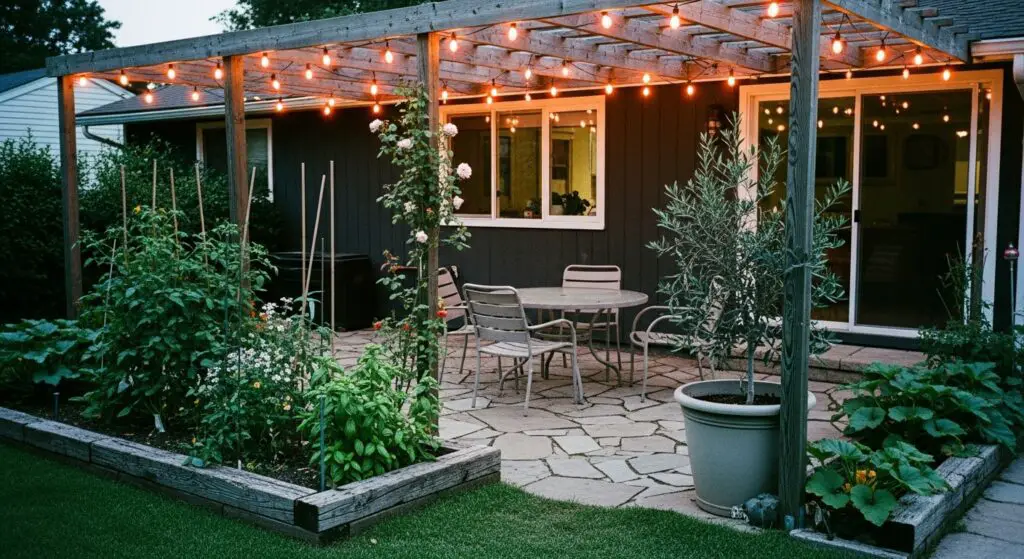
Start Small
Begin with one corner. One perfect Italian garden nook. Get it right before expanding. Success builds confidence. Mistakes stay manageable.
Maybe start with your entry. First impressions matter. Two matching planters. A simple fountain. Gravel mulch in beds. Instant Italian welcome.
Or transform your patio first. Add large containers. String overhead lights. Install a wall fountain. Create an outdoor room. Expand from there.
Starting small lets you learn. What grows well? What maintenance suits you? What style feels right? Answer these questions in miniature first.
Building Over Time
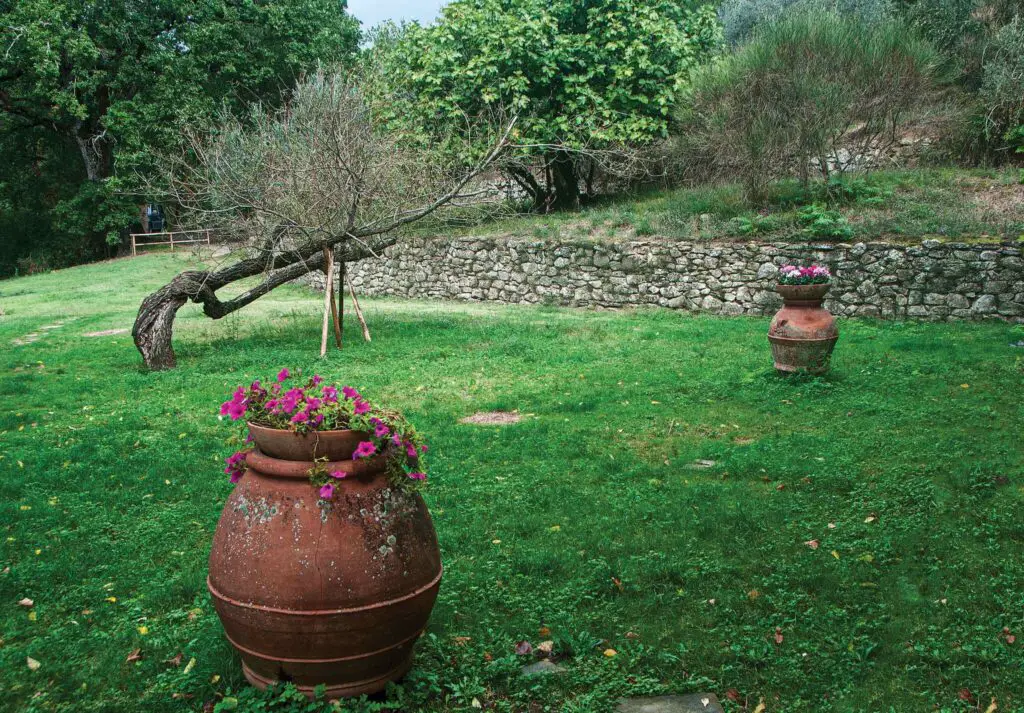
Italian garden landscape develops slowly. Add elements each year. A pathway this spring. New plants in fall. A fountain next summer. Gardens evolve.
Keep a master plan in mind. Sketch your ultimate vision. Work toward it gradually. Each addition should fit the whole. Random additions create chaos.
Save for quality pieces. Better to wait for the right fountain. The perfect bench. The ideal plants. Patience creates better gardens than impulse buying.
Document progress with photos. You’ll forget how far you’ve come. Pictures remind you. They also help plan next steps. Plus, they’re fun to share.
Seasonal Considerations
Italian-style gardens change with seasons. Plan for year-round interest. Evergreen structure matters most. Deciduous plants add seasonal flair.
Spring brings bulbs and fresh growth. Plant Italian anemones. Add ranunculus. Their jewel tones pop against silver foliage. Early color energizes the garden.
Summer means drought tolerance tested. This is when good plant choices shine. Mediterranean natives look good while neighbors’ gardens struggle. Your preparation pays off.
Fall offers second bloom period. Many Mediterranean plants flower again. Trim lavender for repeat show. Enjoy warm evening light. Garden relaxation season.
Winter reveals structure. Evergreen hedges. Stone pathways. Architectural plants. Good design looks beautiful even dormant. This is when hardscaping earns its keep.
Personal Expression
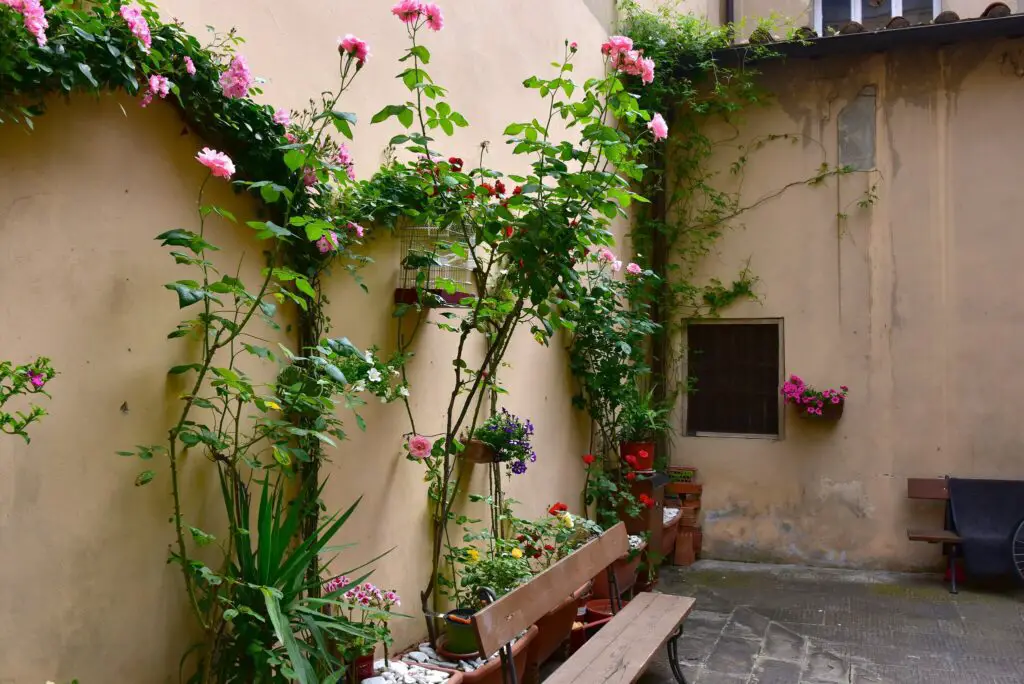
Your Italian garden ideas backyards should reflect you. Traditional Italian design provides framework. You add personality. Make it yours.
Maybe you love color. Add more flowering plants. Use colorful containers. Paint walls warm terracotta. Italian style accommodates joy.
Or perhaps you prefer minimalism. Focus on green architecture. Use monochromatic plantings. Let stone and gravel dominate. Still completely Italian.
Include personal touches. Family heirloom pots. Artwork from travels. Herbs from grandmother’s garden. These elements make gardens unique.
The Living Garden
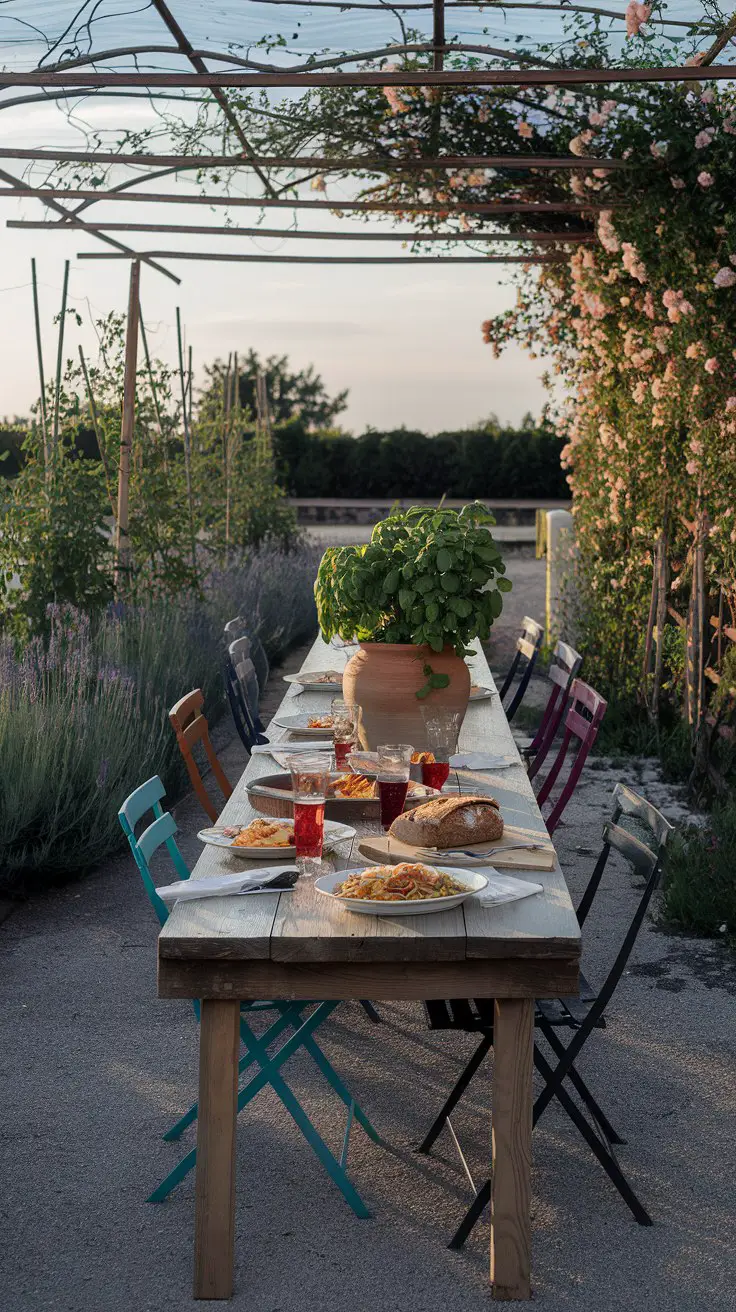
Gardens are never finished. They grow. They change. They surprise you. Accept this flux as part of the charm.
Plants will die. Replace them with better choices. Designs will evolve. Let them. Your taste will change. Gardens should too.
Some years bring drought. Others flood. Gardens that survive adapt. Build resilience through diversity. Mix tough plants with treasured specimens.
Share your garden. Host dinners. Invite friends for wine. Give away herb cuttings. Gardens meant for living create community. That’s very Italian.
La Dolce Vita in Your Own Backyard
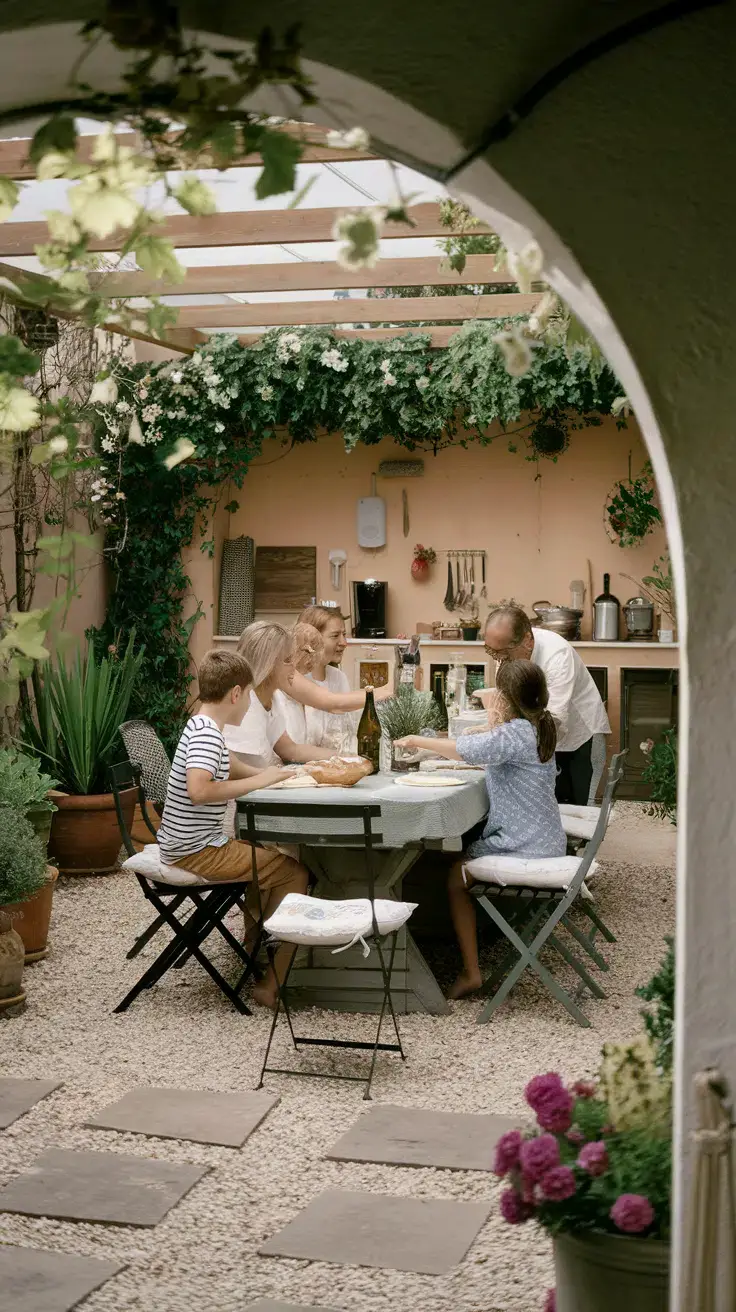
Picture this: A finished garden on a Sunday afternoon. Extended family gathered around a long table. Mismatched chairs unified by cushions. Wine bottles and bread baskets. Children playing in gravel paths. Herbs within arm’s reach of the outdoor kitchen. Not perfect, but perfectly lived-in. Shot from above showing life happening in a loved space.
Creating an Italian garden transforms more than your yard. It changes how you live. Suddenly, you’re eating outside more. Inviting friends over. Growing your own herbs.
The appeal endures because Italian gardens celebrate life. They’re about beauty, yes. But beauty you use. Beauty you live in. Beauty that gets better with time and use.
You don’t need Renaissance wealth or Mediterranean climate. You need understanding of principles. Commitment to outdoor living. Willingness to start somewhere. The rest follows.
Your Italian garden awaits. Whether you dream of formal parterres or modern simplicity. Whether you have acres or a balcony. The principles adapt. The lifestyle translates.
Start planning. Start small. Start anywhere. But start. Because life’s too short for ugly gardens. And far too short not to enjoy la dolce vita in your own backyard.
Every evening could end with wine among the lavender. Every morning could start with espresso by the fountain. That’s the gift of Italian garden style. Not just a pretty space. A beautiful life.
